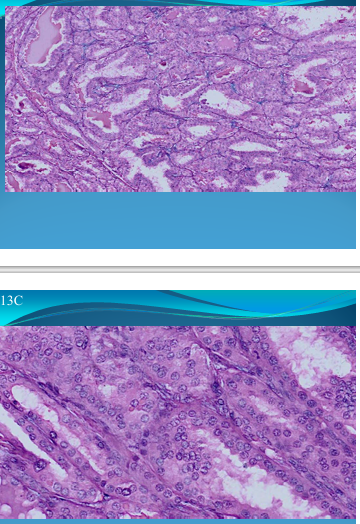Pathology MICROSCOPIC - 2nd Semester Lab Exam
1/36
There's no tags or description
Looks like no tags are added yet.
Name | Mastery | Learn | Test | Matching | Spaced |
|---|
No study sessions yet.
37 Terms
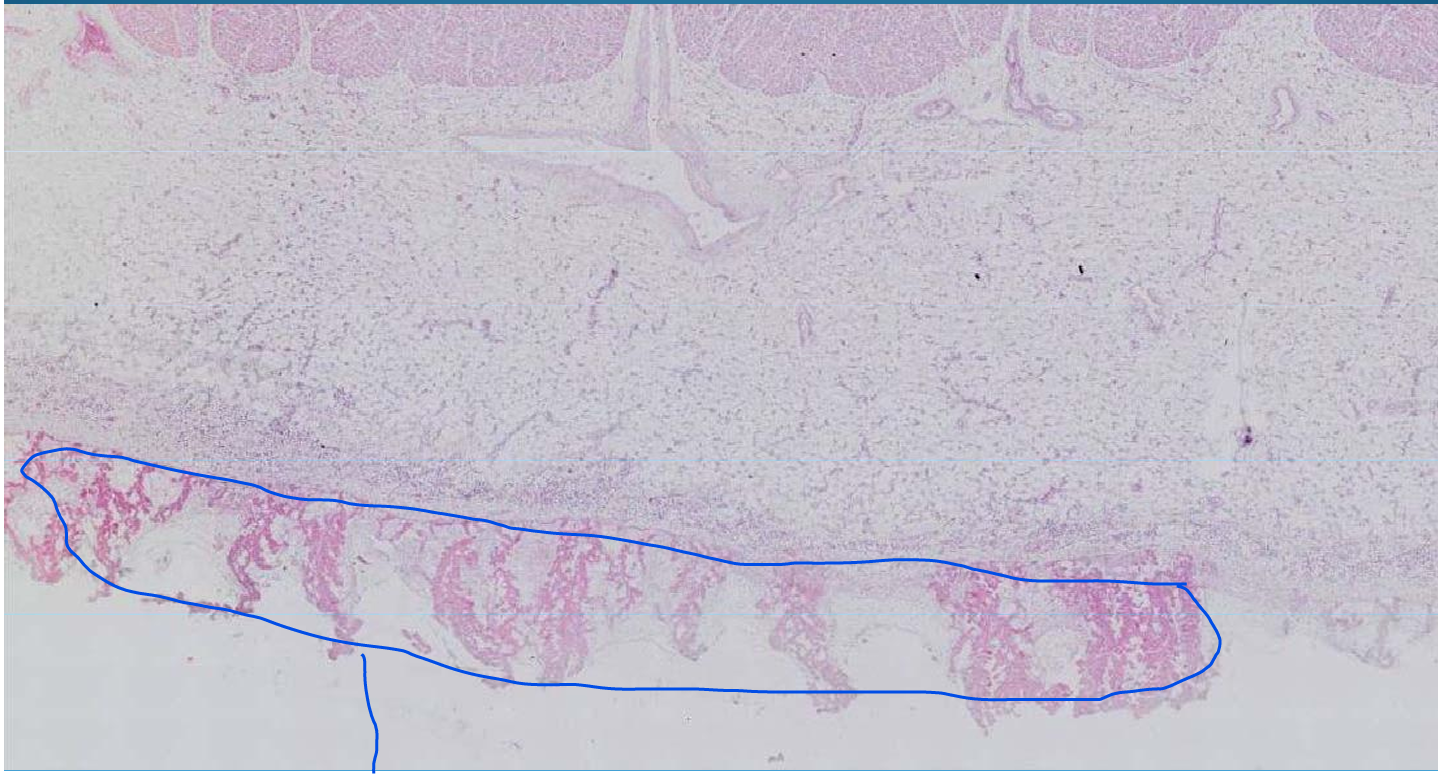
What is this?
HEART:
Fibrinous Pericarditis: deposits of Fibrin on surface of pericardium
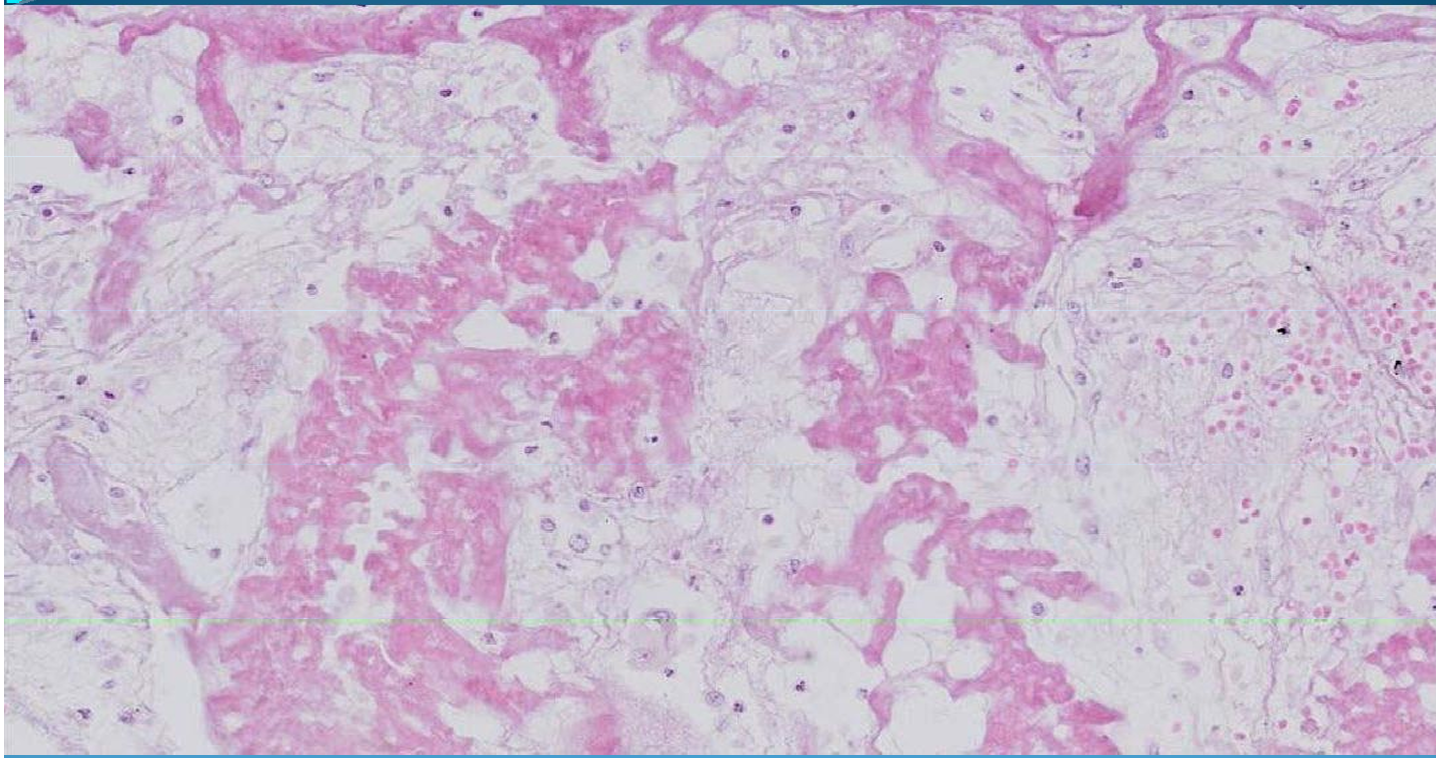
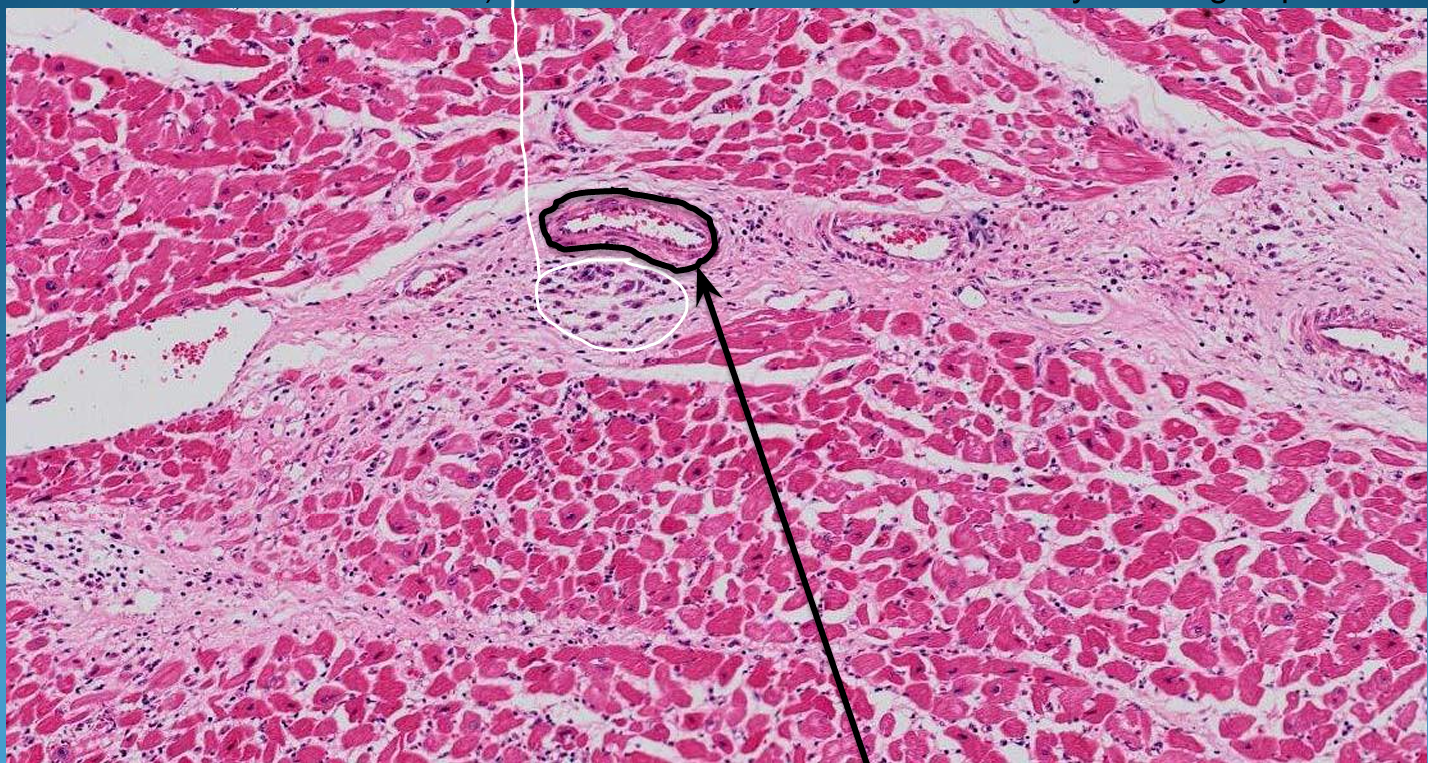
What is this?
HEART:
Rheumatic Myocarditis: Aschoff Nodules under vessel perivascular and Aschoff cells


What is this?
HEART:
Acute myocardial infarction: granulation tissue and PMNs, well delimitated, neformation vessels; about to organize phase
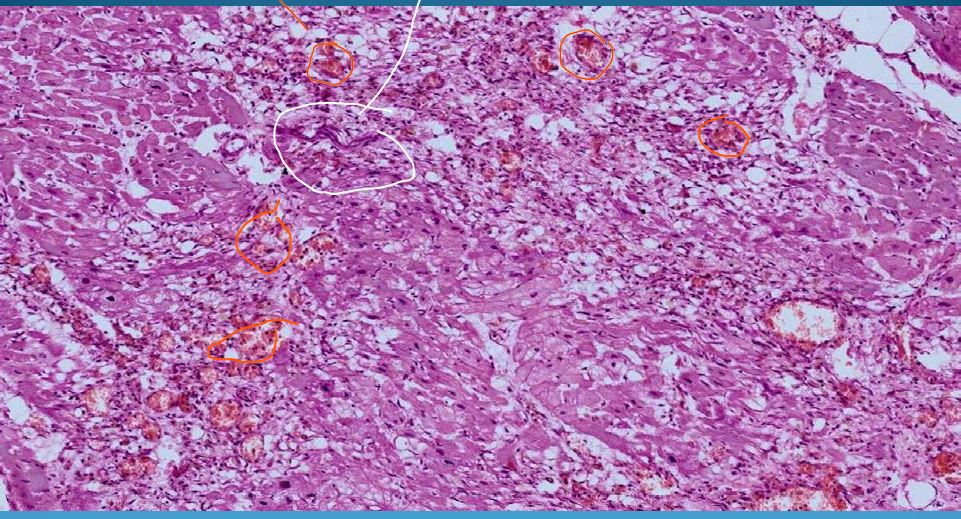
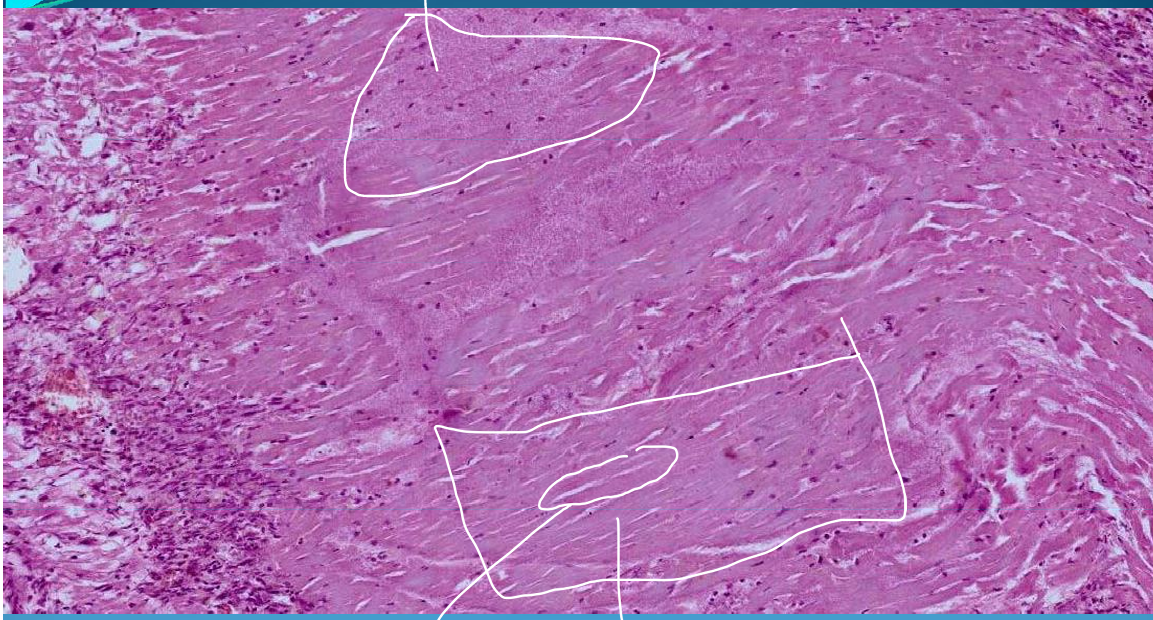
What is this?
HEART:
Acute Myocardial Infarction: structured & unsctructured necrosis (structured coagulation necrosis)
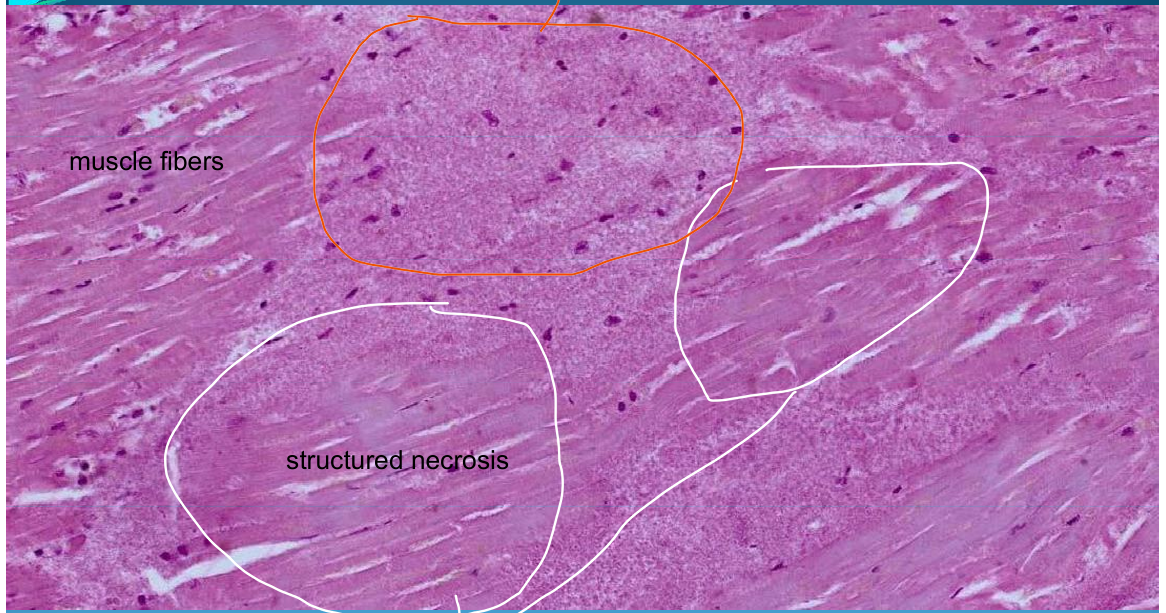

What is this?
HEART:
Sclerosis and Fibrosis: Old infarction/chronic

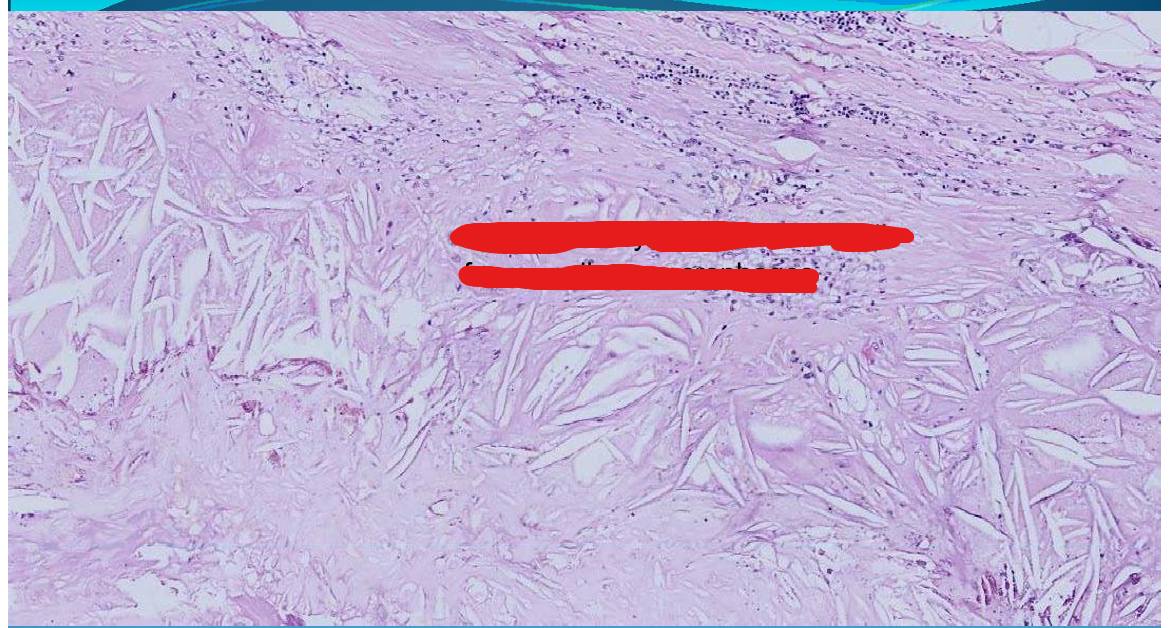
What is this?
ARTERY:
Atherosclerosis: cholesterol crystals and complicated by thrombosis
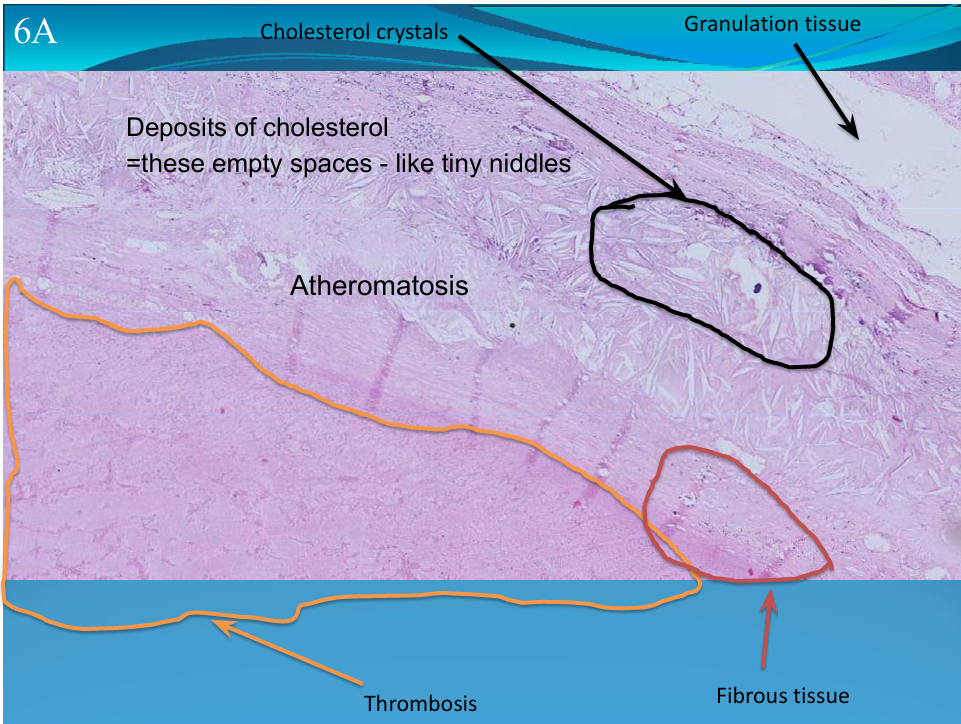

What is this?
LUNG:
Lung Infarction: Pulmonary hemorrhagic infarction with structured necrosis; reddish area = red infarction,
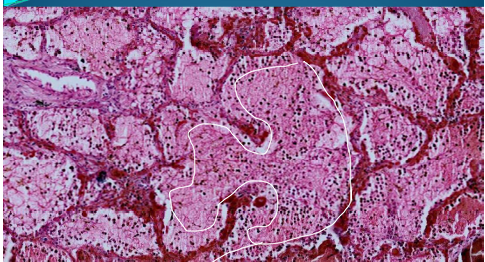
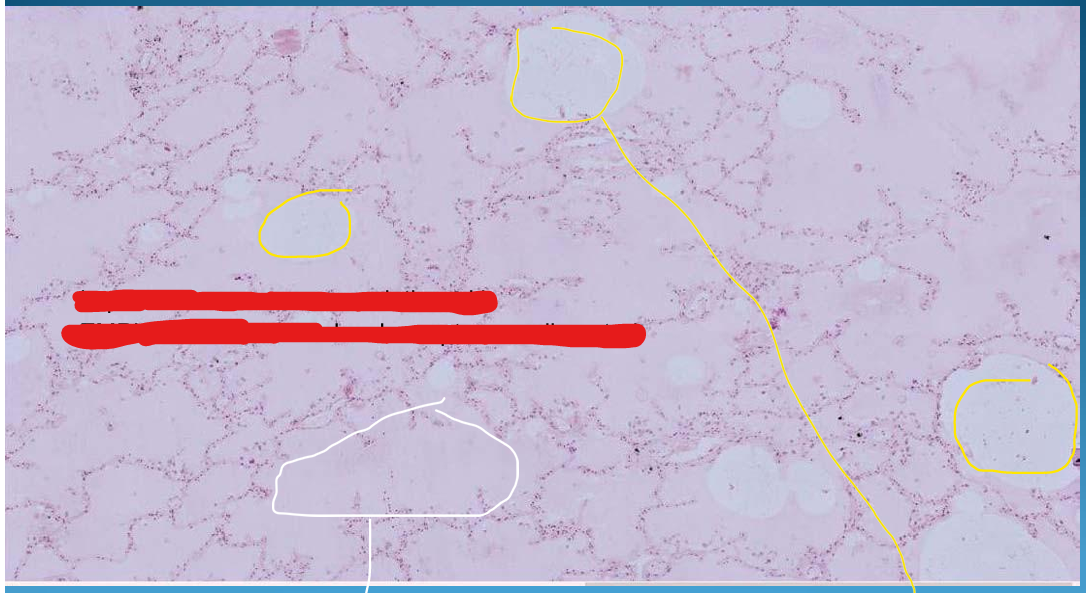
What is this?
LUNG:
Pulmonary Edema & Emphysema: liquid inside alveolar space; association with emphysema because interalveolar septa is disrupted
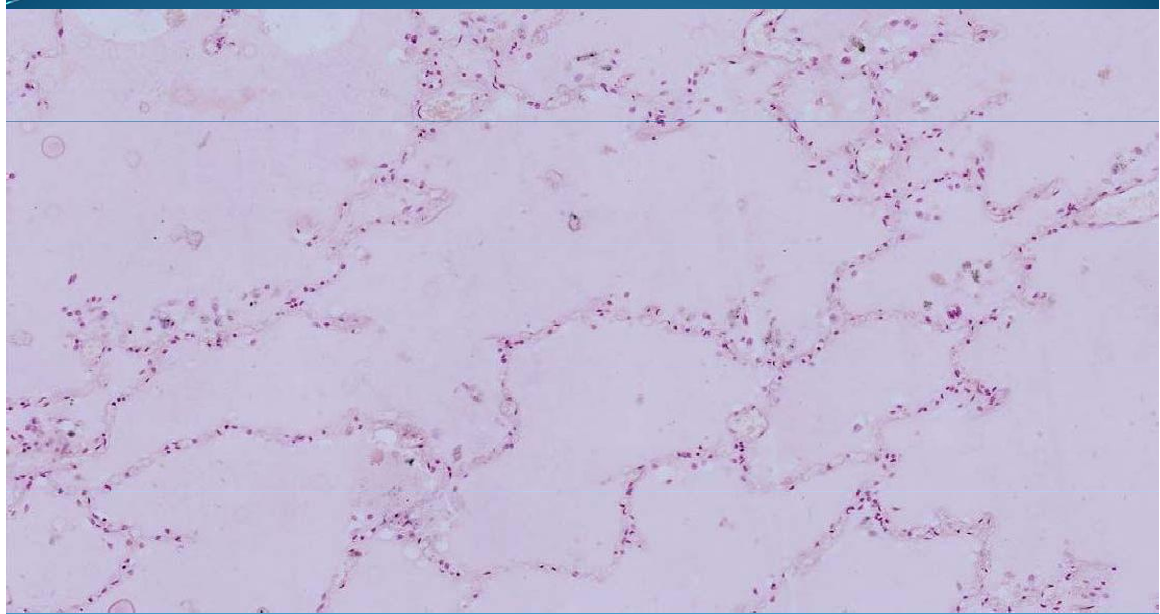
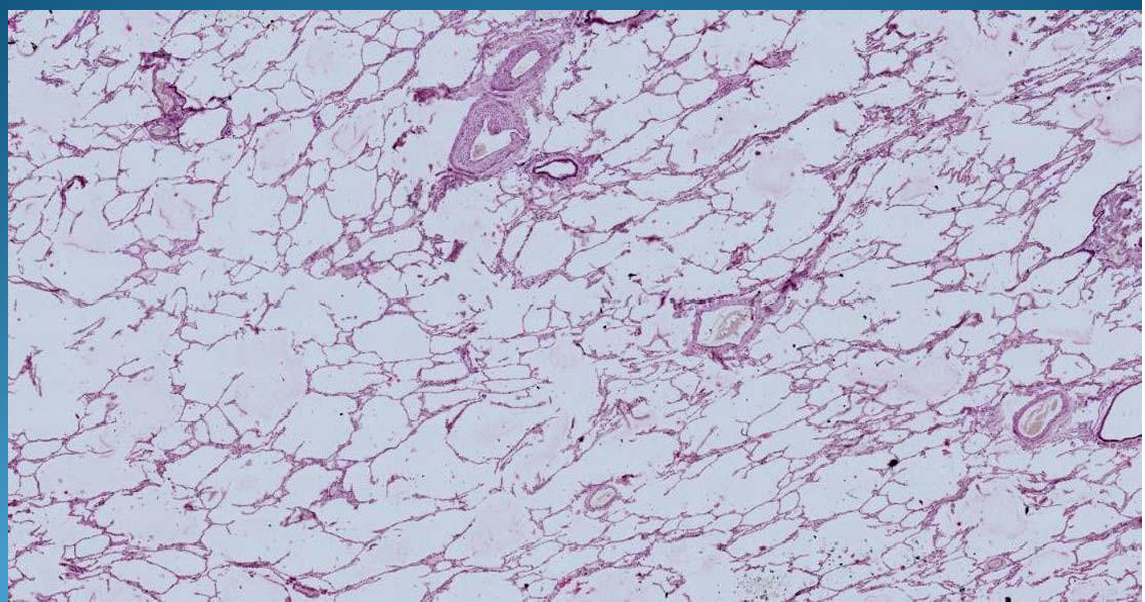
What is this?
LUNG:
Chronic emphysema and Atelectasis with disrupted and detached alveolar septa
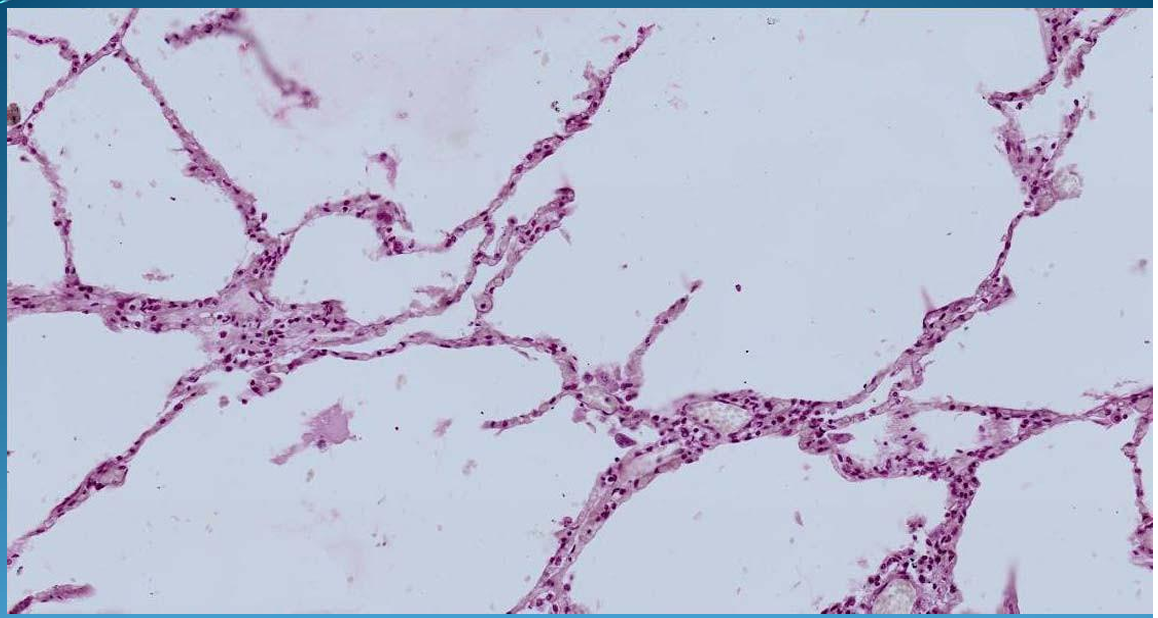
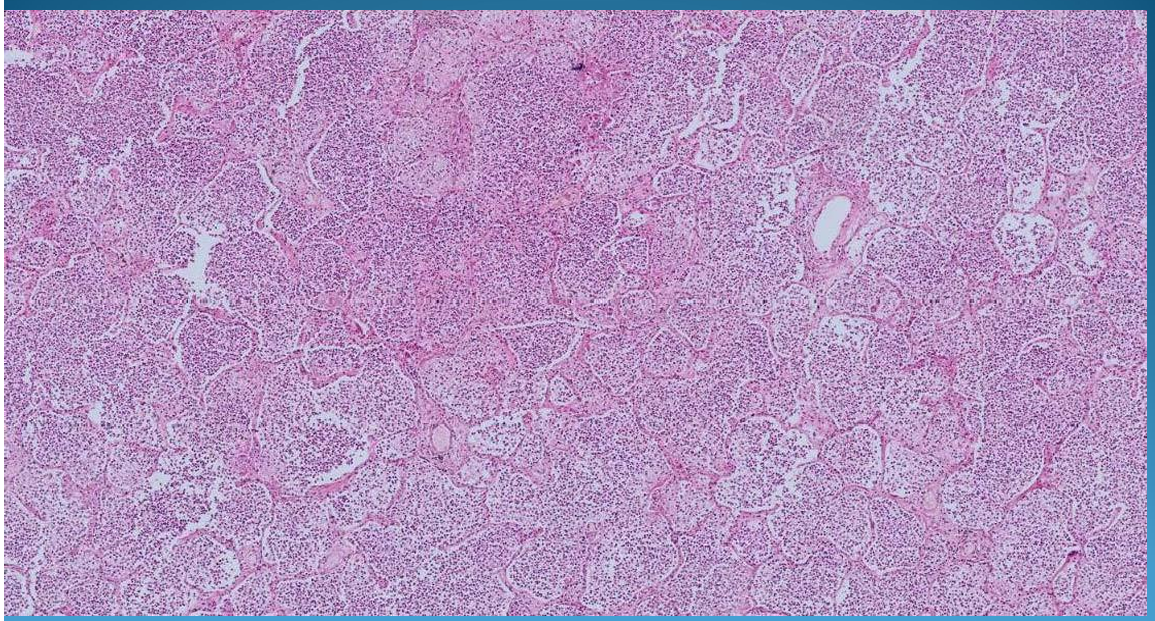
What is this?
LUNG:
Lobar pneumonia: monomorphic aspect of alveoli and gray hepatisation with PMNs, fibrin network
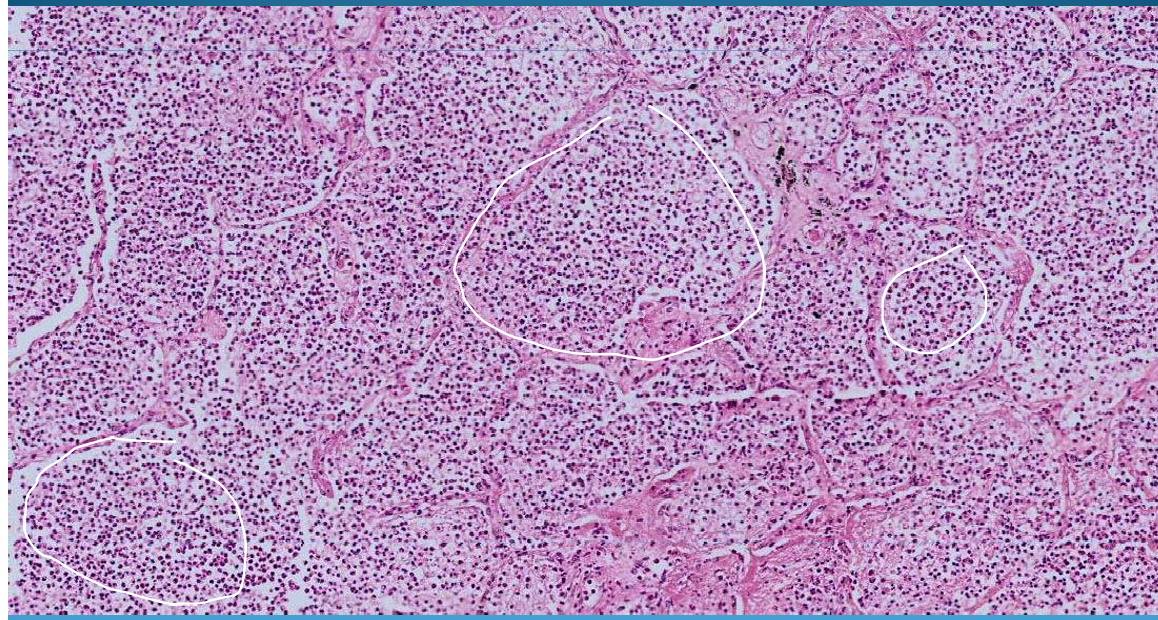
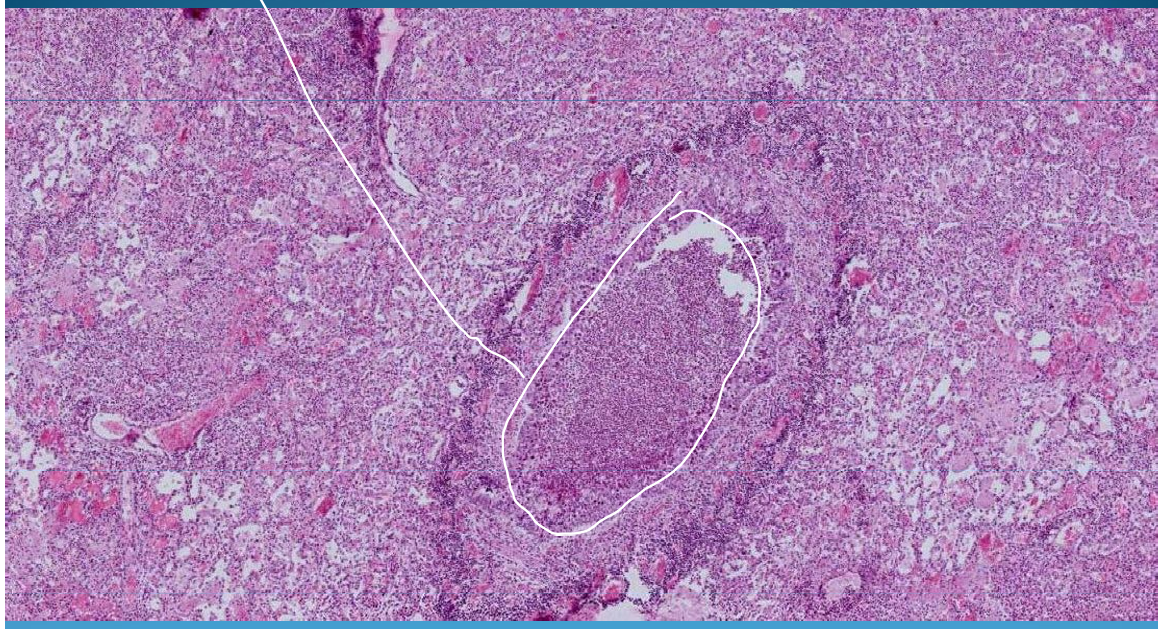
What is this?
BRONCHIA:
Bronchopneumonia with polymorphic aspect of alveoli, filled with pus

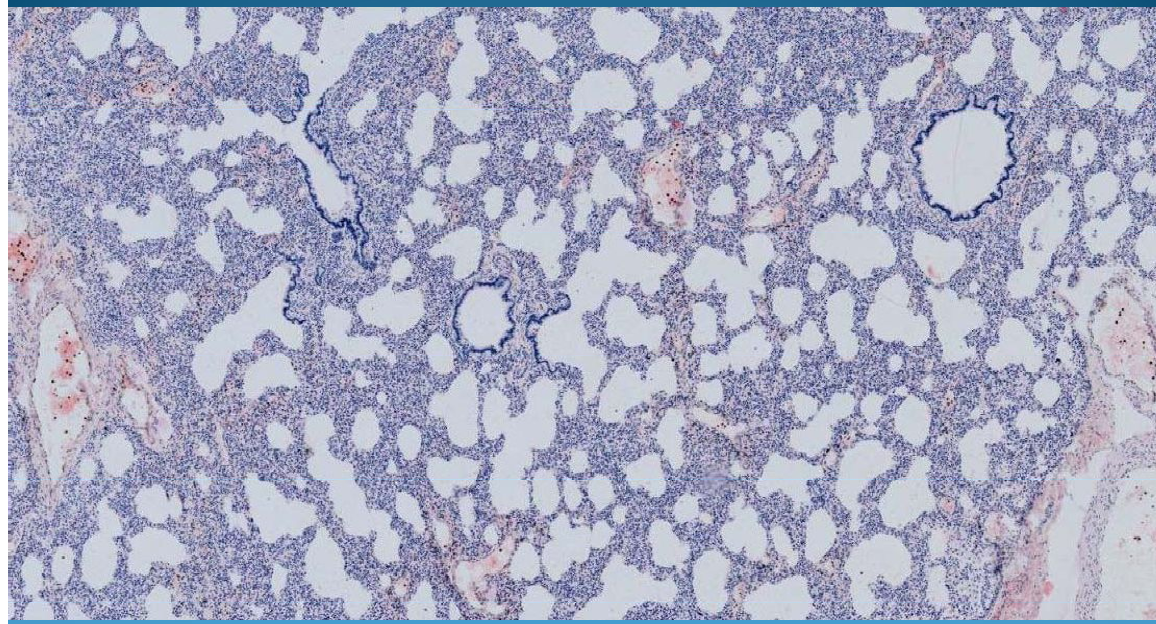
What is this?
LUNG:
Intersititial pneumonia - thick septum, lymphocyte and plasma cell infiltrate inside interalveolar septa, smooth alveoli
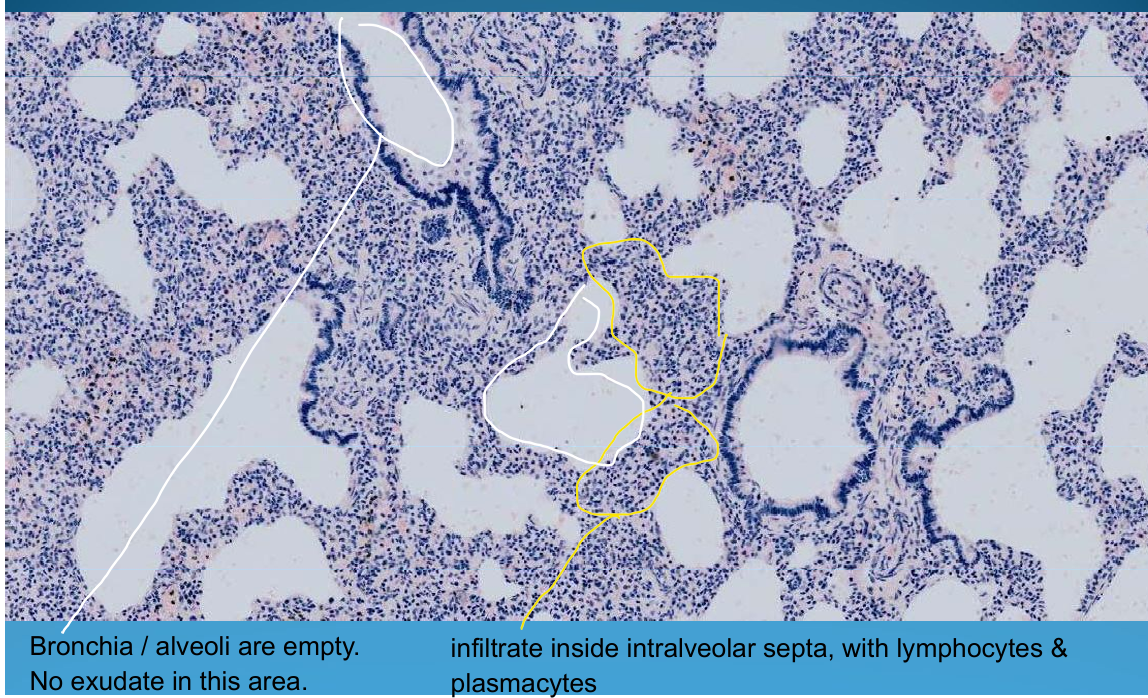
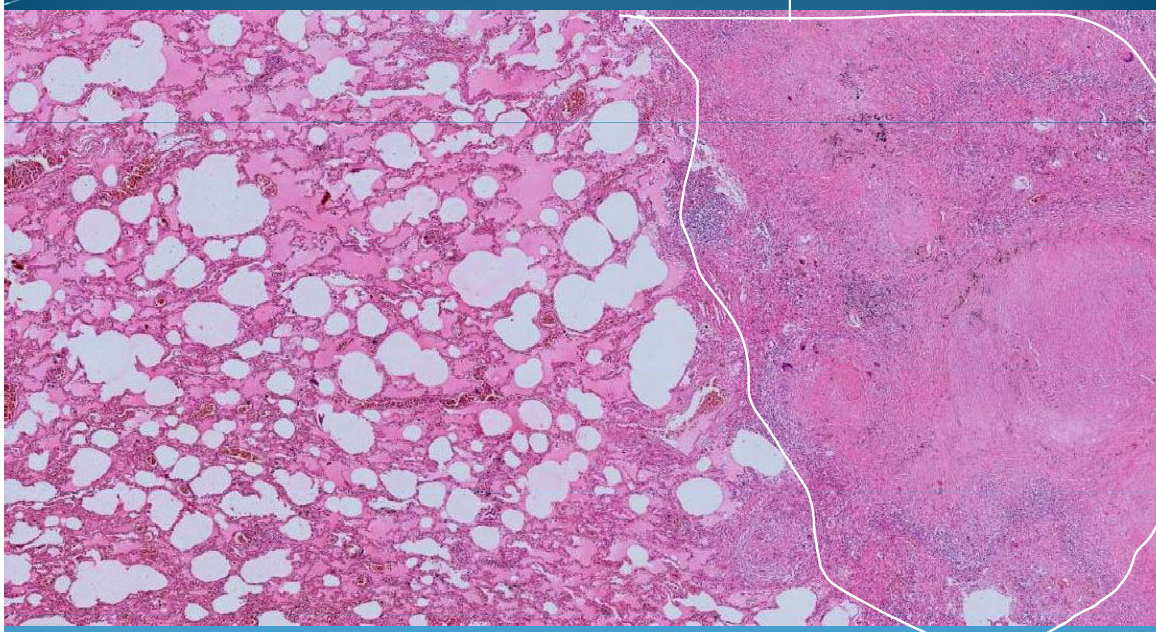
What is this?
LUNG:
Pulmonary tuberculosis: Edema, tuberculous epitheioid granuloma with caseous necrosis and surrounded by lymphocytes; Langhans cells and epithelioid cells
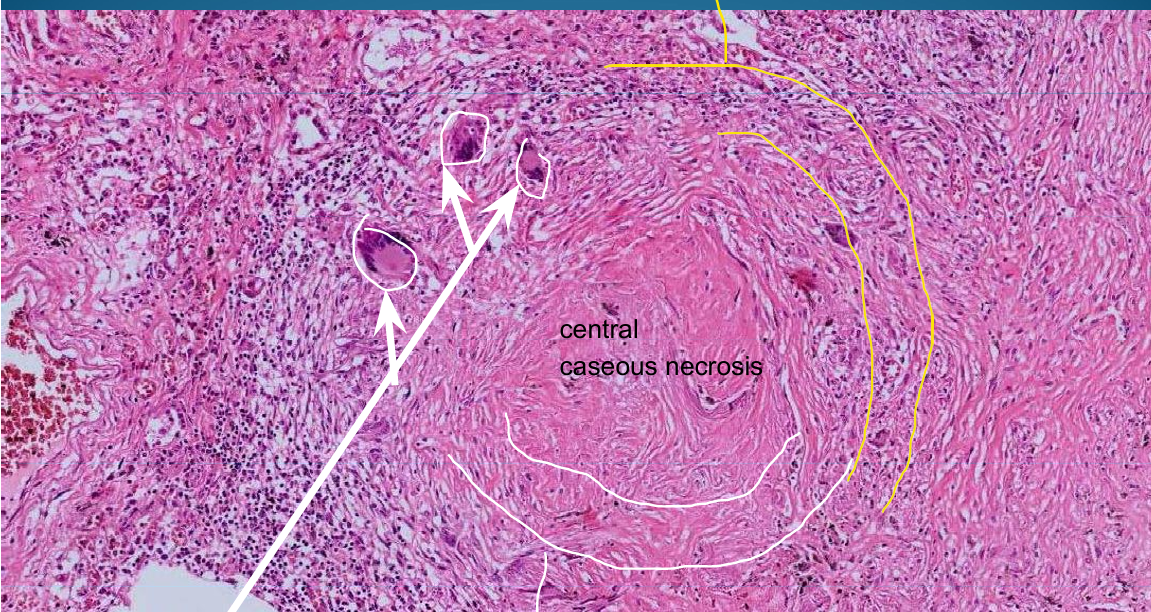
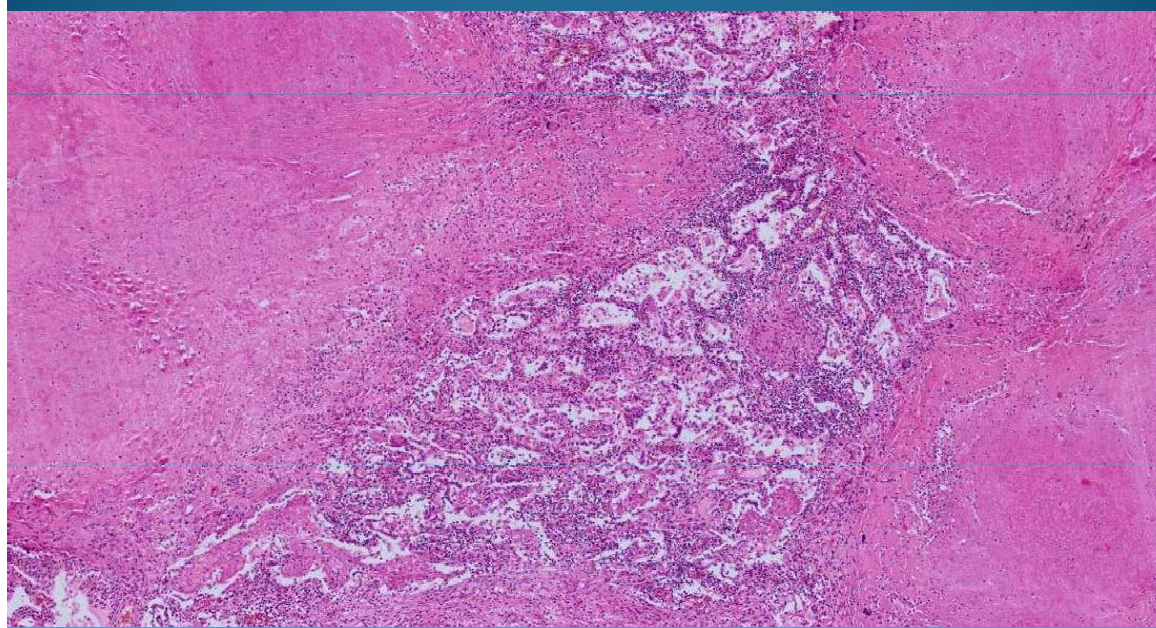
What is this?
LUNG:
Pulmonary Tuberculosis + Bronchopneumonia: necrosis, inflammation and Langhans cells
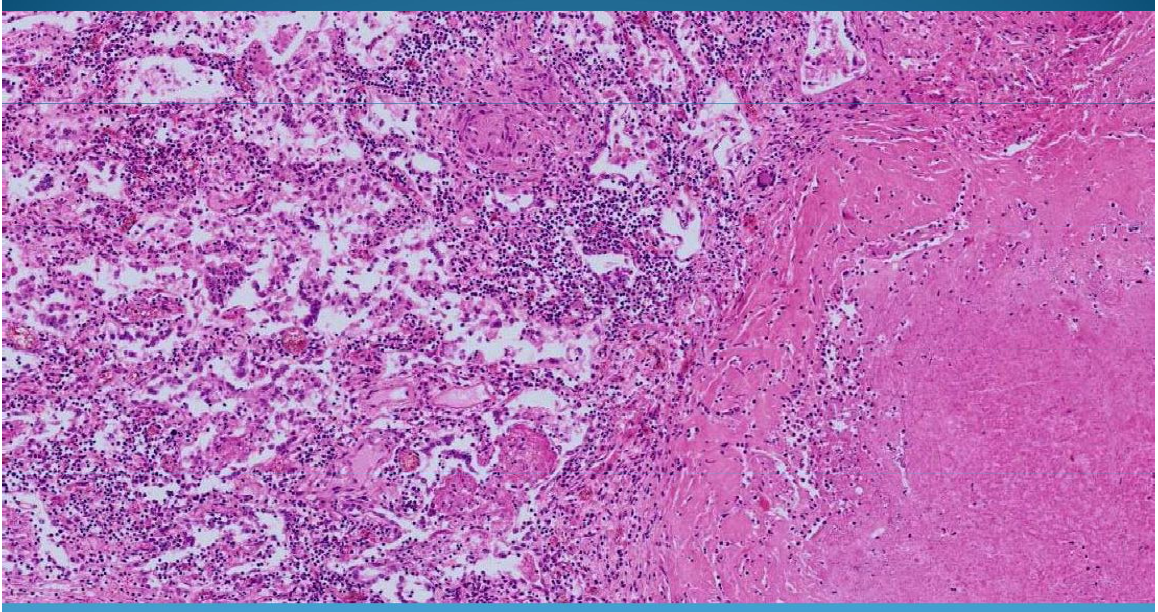
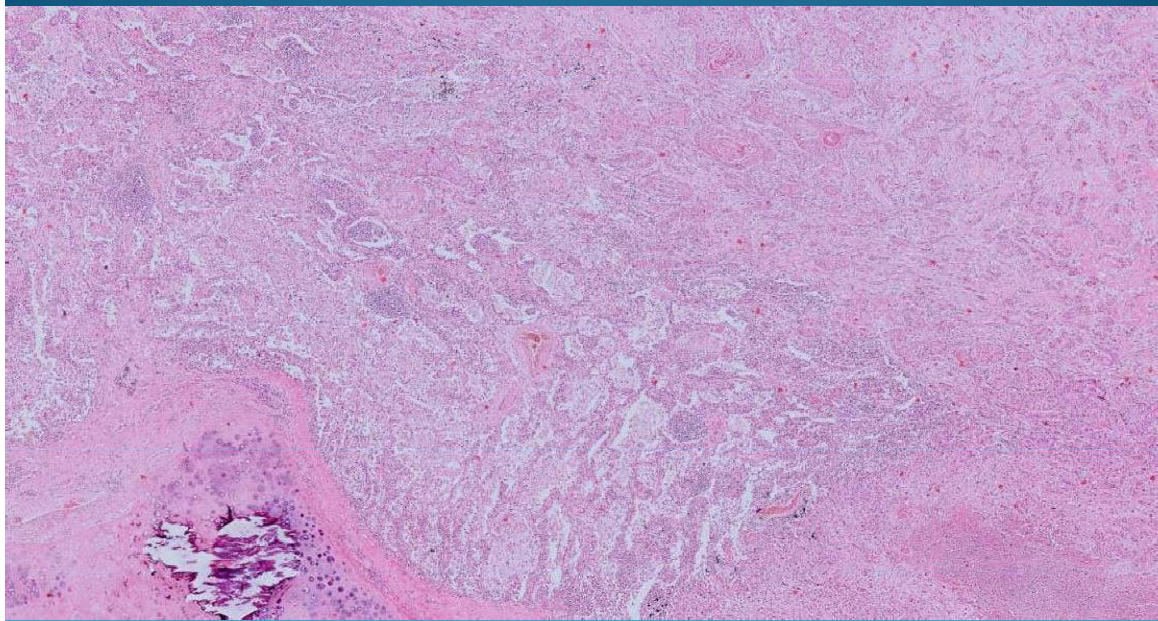
What is this?
LUNG:
Pulmonary carcinoma: with well differentiated squamous cells and keratin pearls
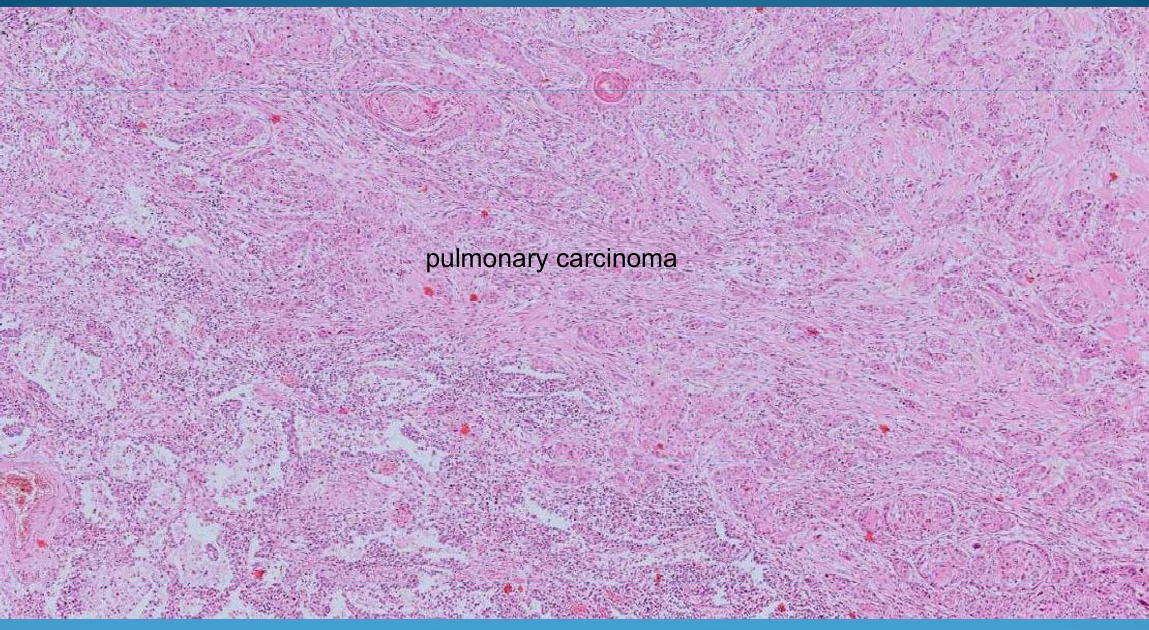
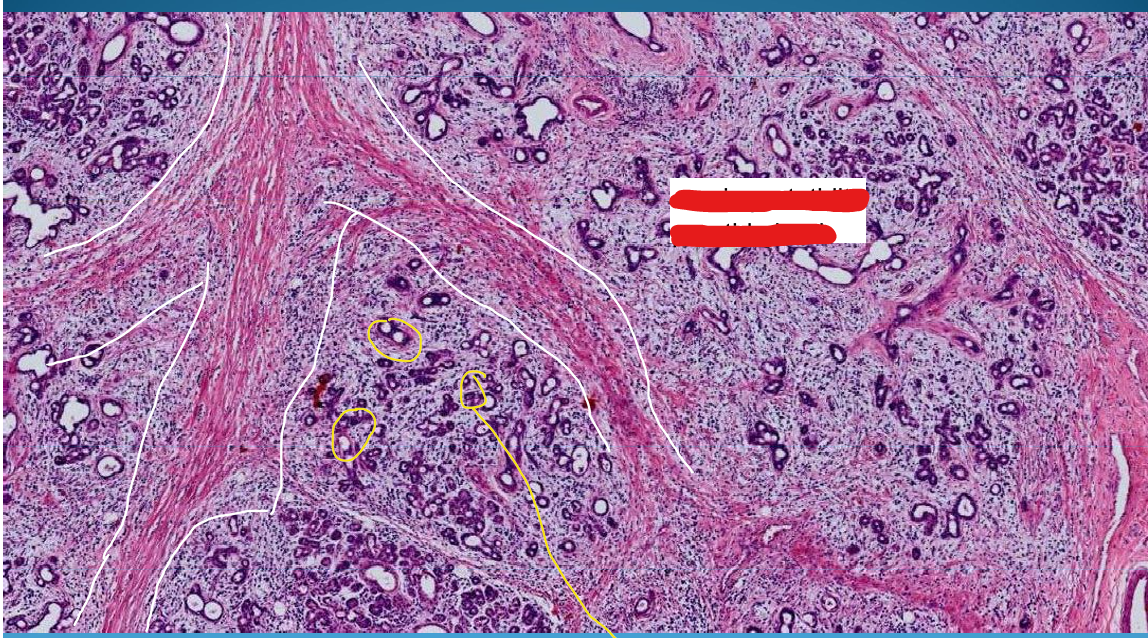
What is this?
Non-specific chronic parotiditis with atrophic parotid glands; gland disrupted by bands of fibrous tissue and lymphocyte/plasmocyte infiltrates
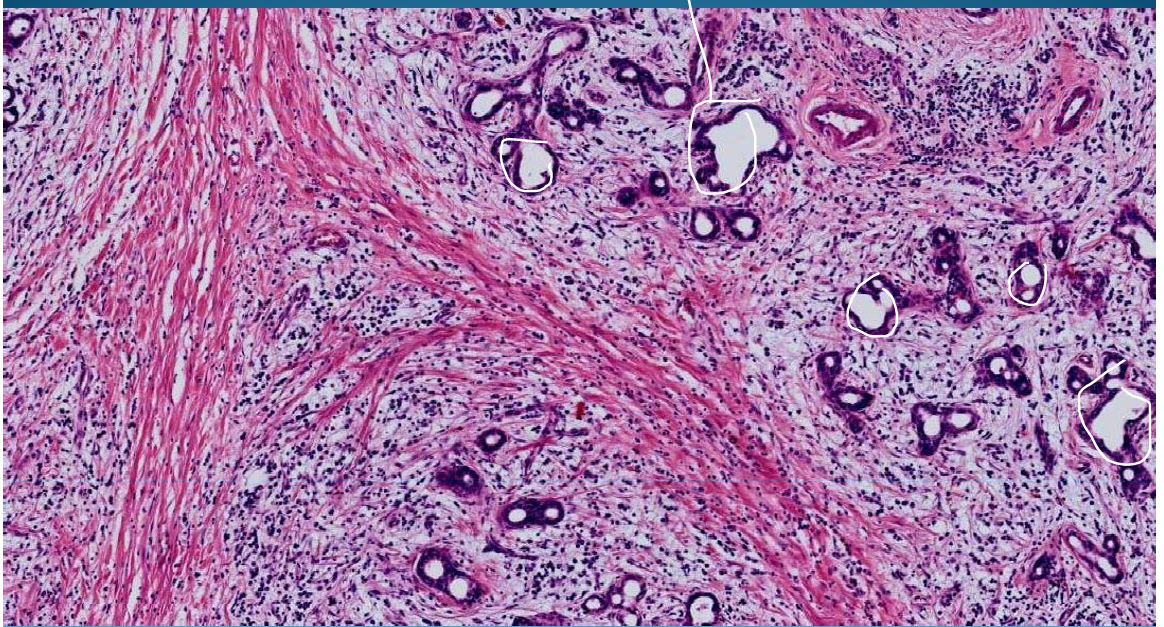
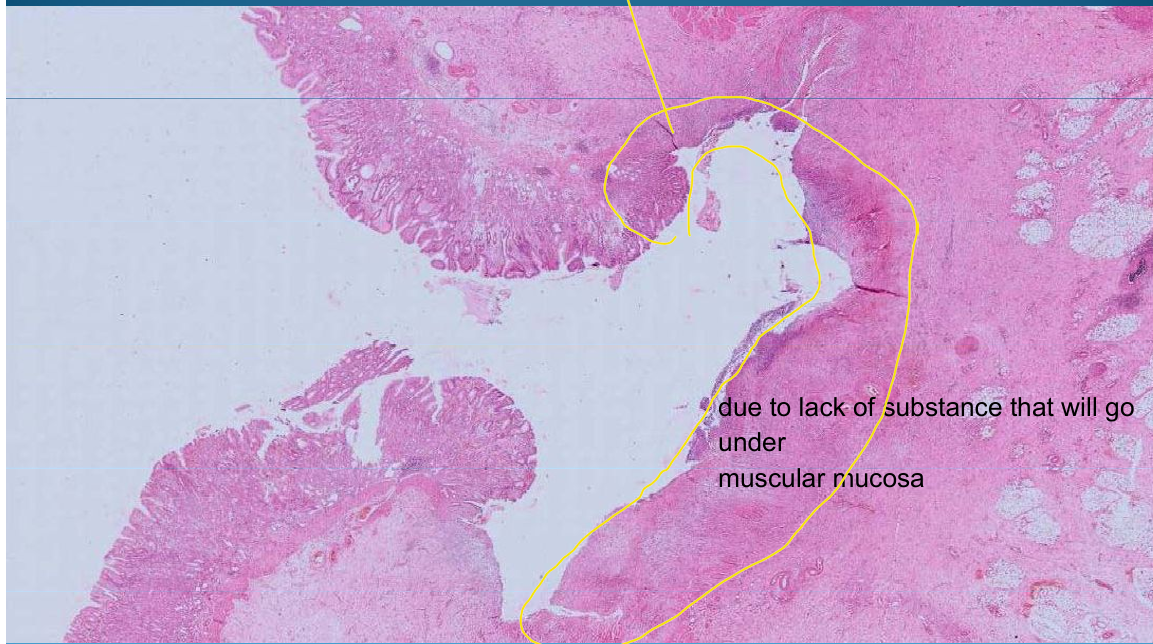
What is this?
Chronic gastric ulcer: lack of substance that will go under muscularis mucosa
Layers of Ulcer:
1st layer - Fibrinoid necrosis
2nd layer - inflammatory cells
Granulomatous tissue layer between


What is this?
STOMACH:
Diffused Gastric Cancer: Signet cell carcinoma (mucinous carcinoma)
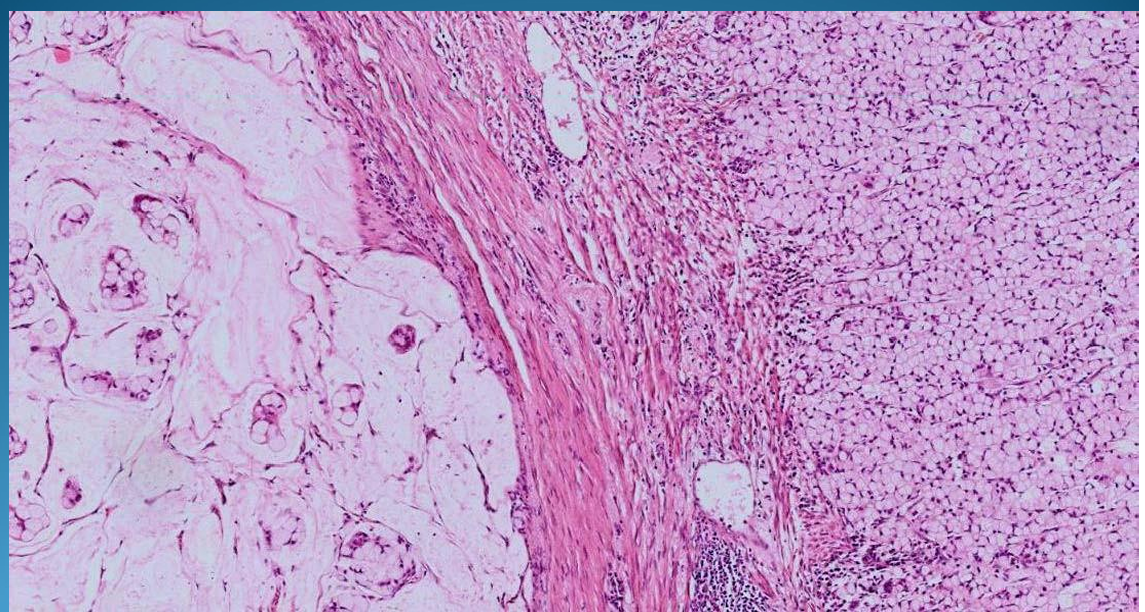
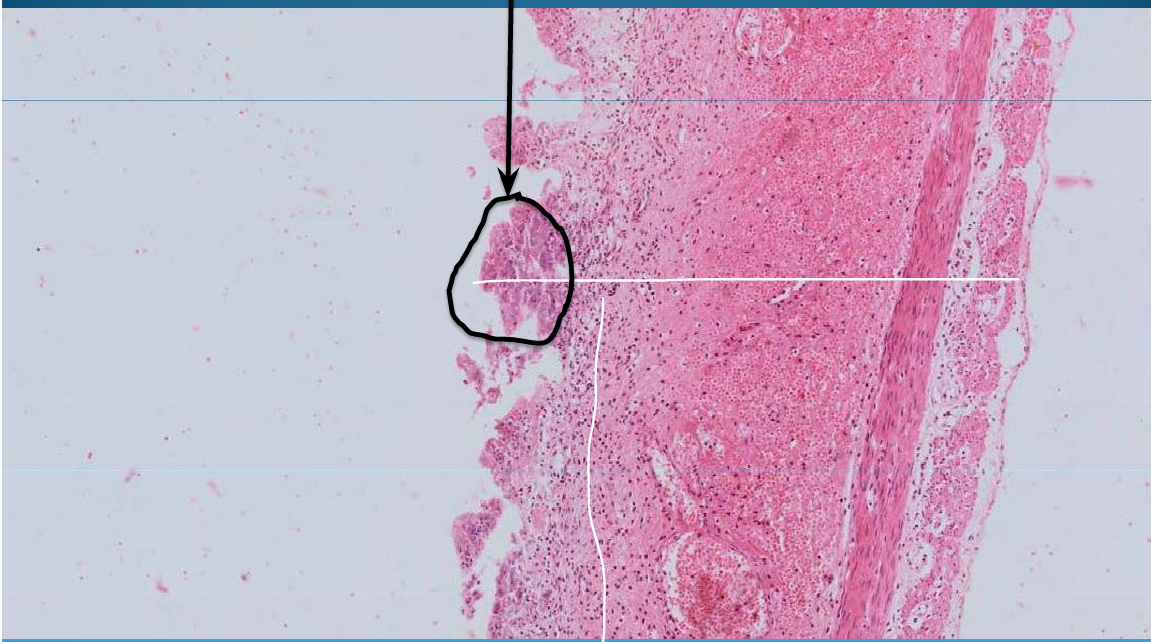
What is this?
INTESTINE:
Enteritis: ulcerative and necrotic type with inflammation
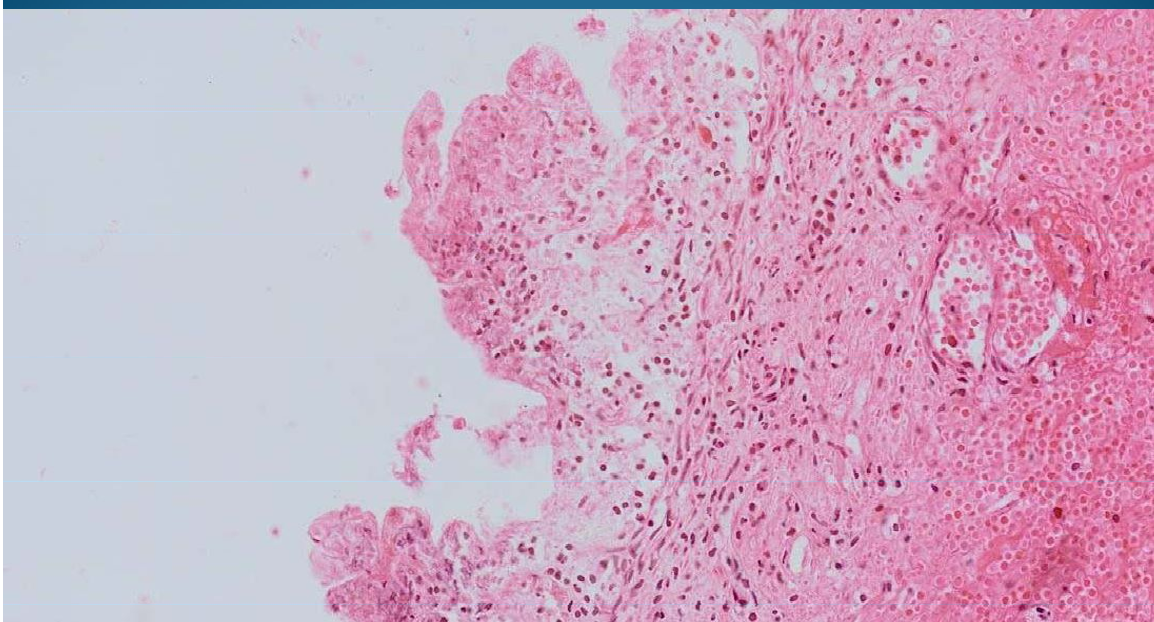
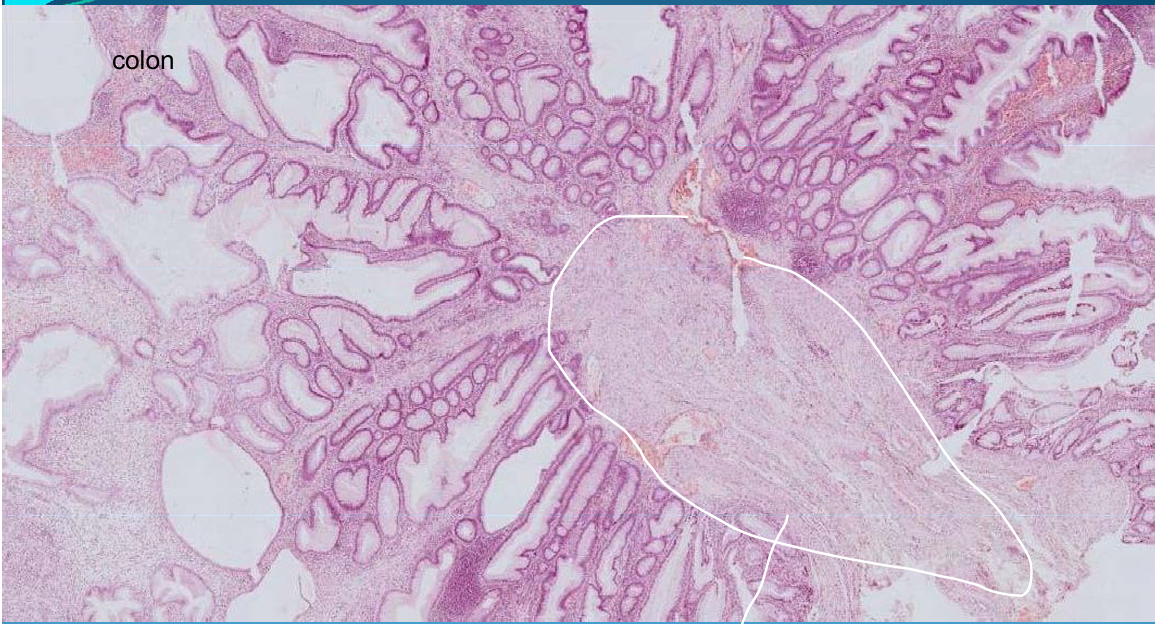
What is this?
INTESTINE:
Colon adenomatous polyps - simple epithelial benign tumor
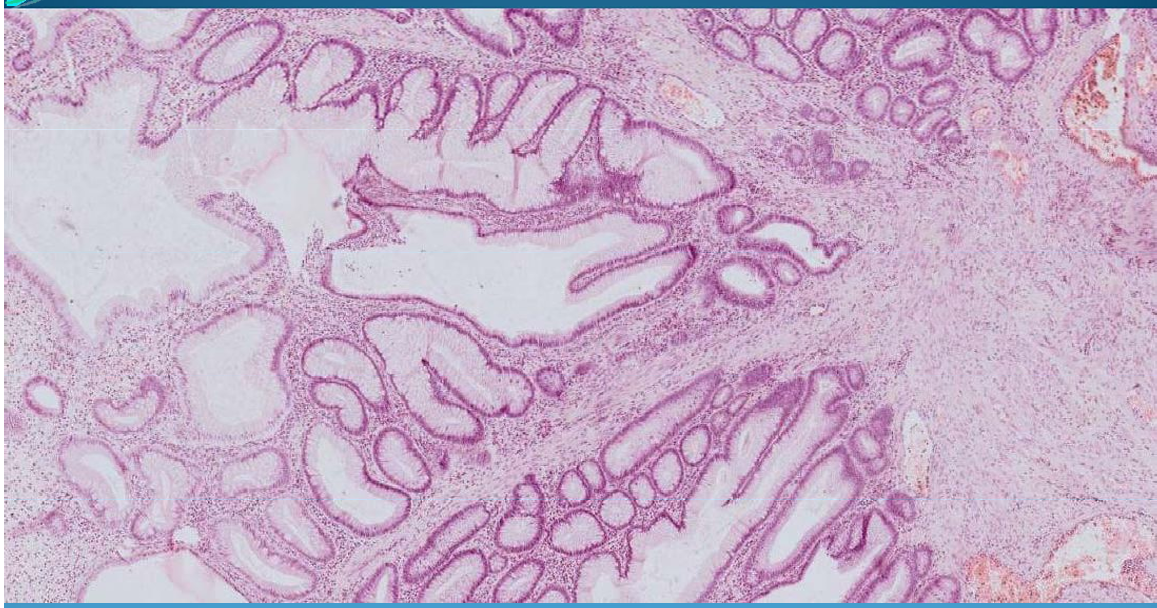
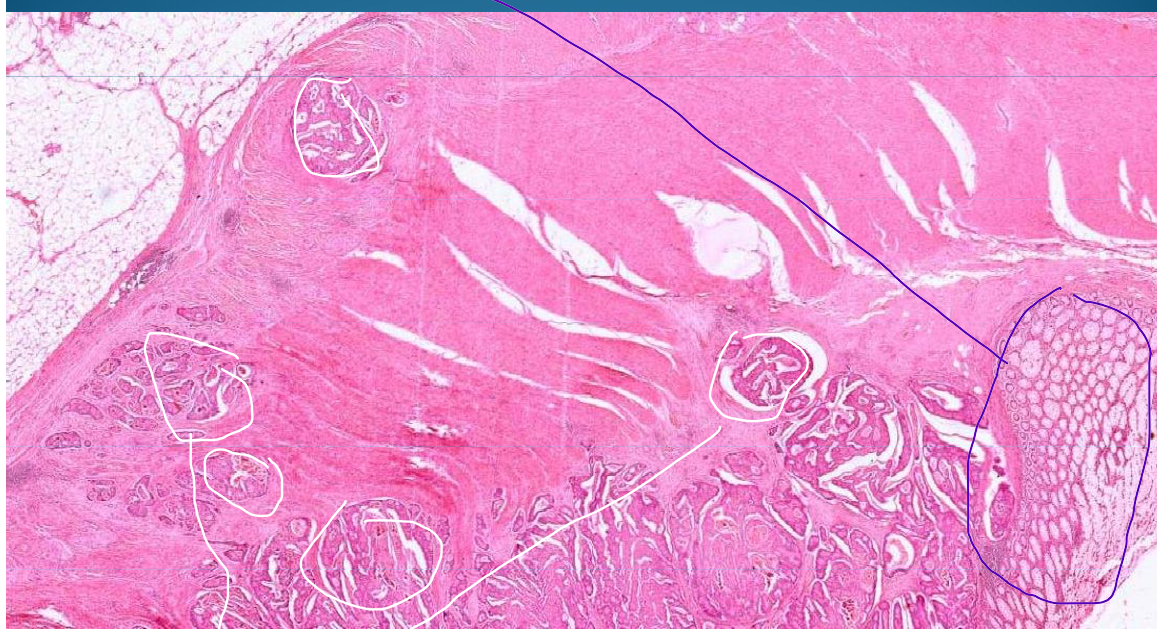
What is this?
COLON:
Adenocarcinoma: Malignant epithelial tumor, moderately differentiated, crowded cells with small glands

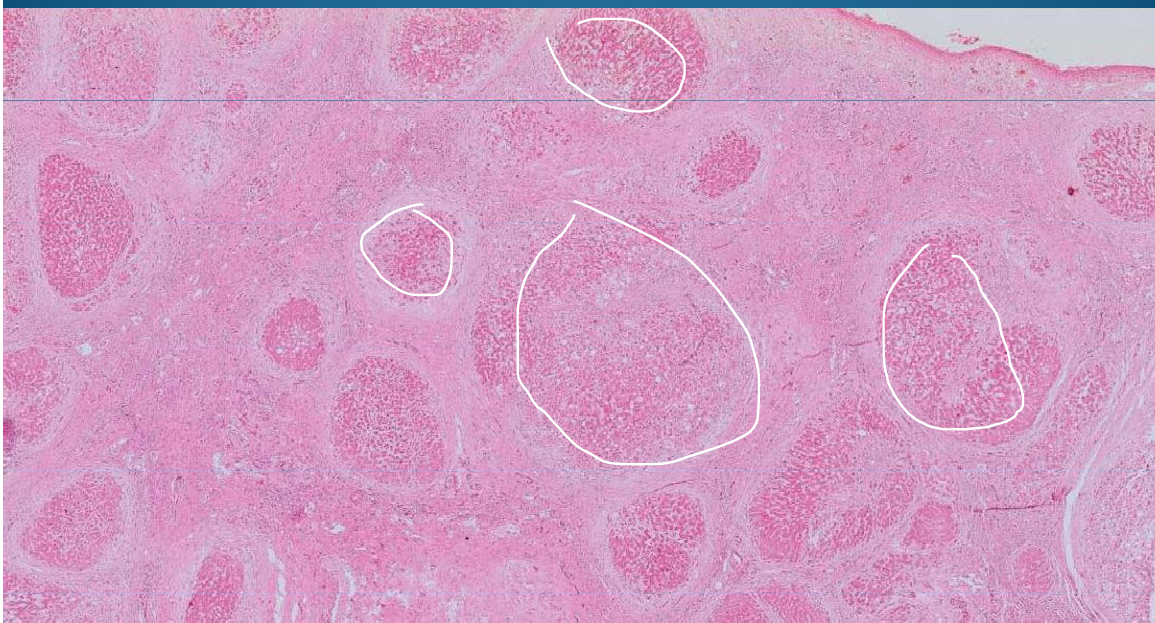
What is this?
LIVER:
Liver cirrhosis: lots of fibrosis with regenerative nodules surrounded by sclerotic tissue and hyperplasia of biliary canaliculi; steatosis
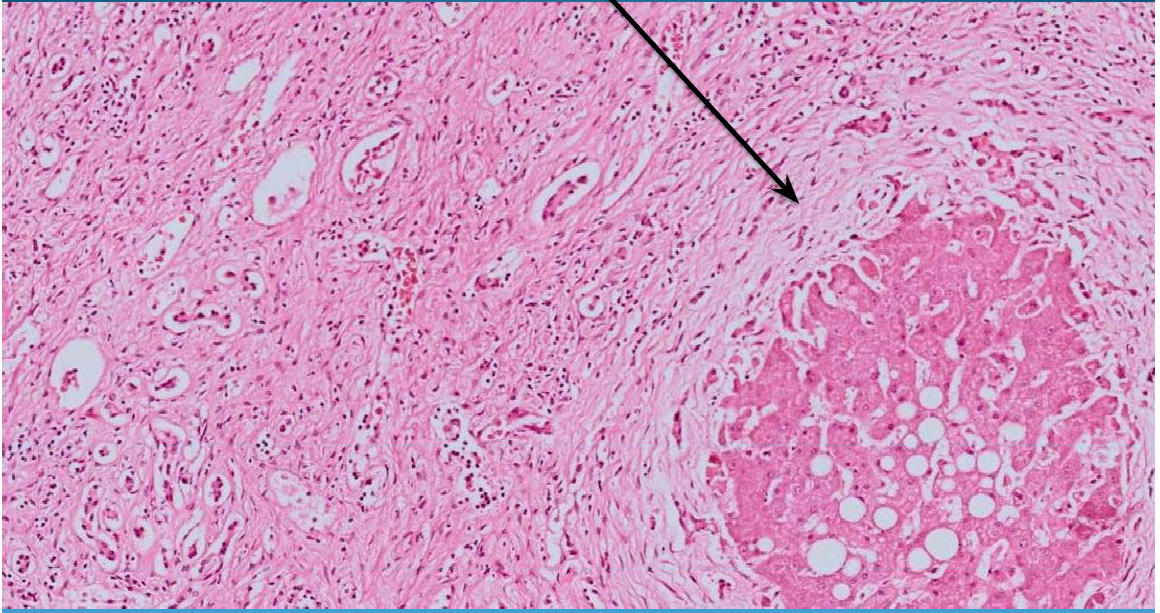
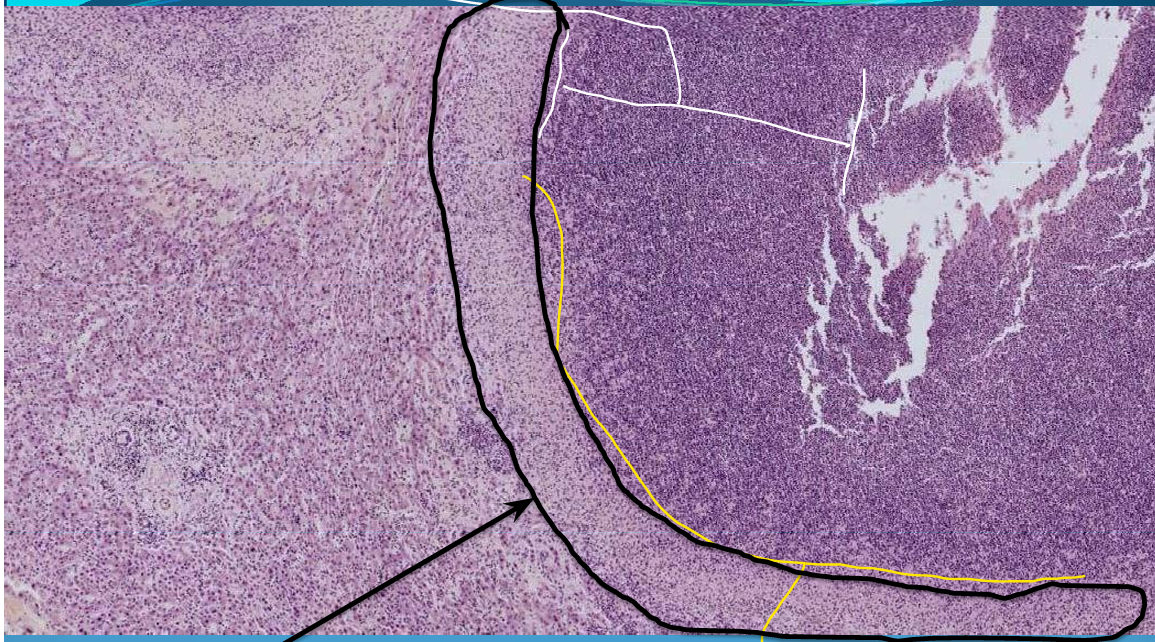
What is this?
LIVER:
Hepatic abscess; well circumscribed area of liquefaction necrosis + PMNs; pyogenic capsule
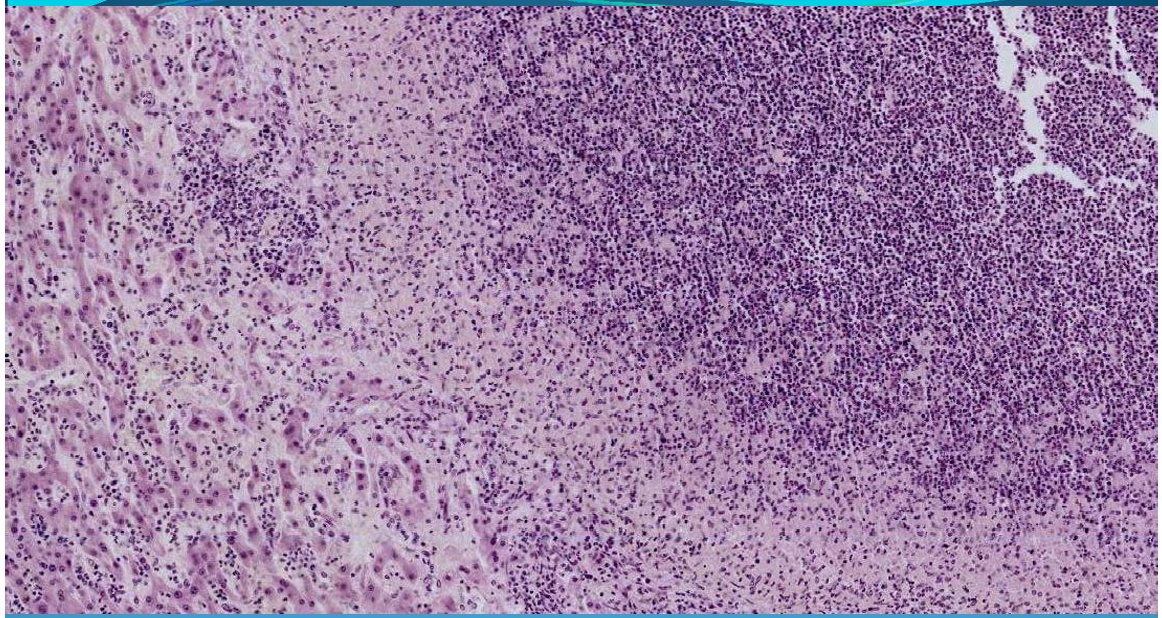
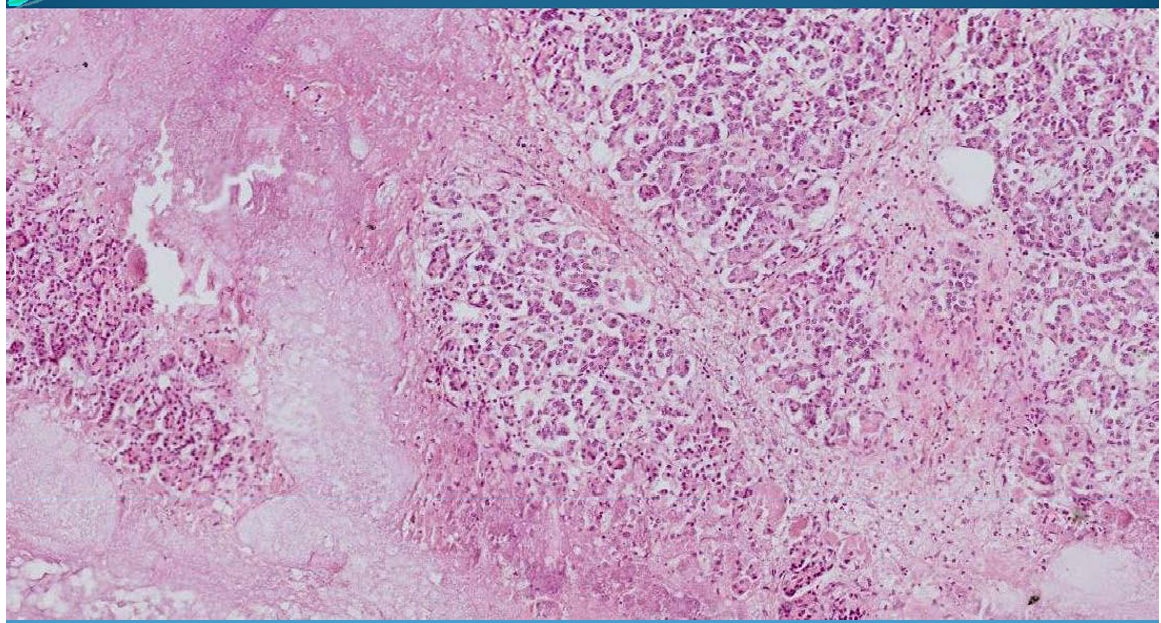
What is this?
PANCREAS:
Cytosteatonecrosis: acute hemorrhagic pancreatitis, ulcero-necrotic pancreatitis; necrosis of pancreatic tissue, fatty tissue and acini
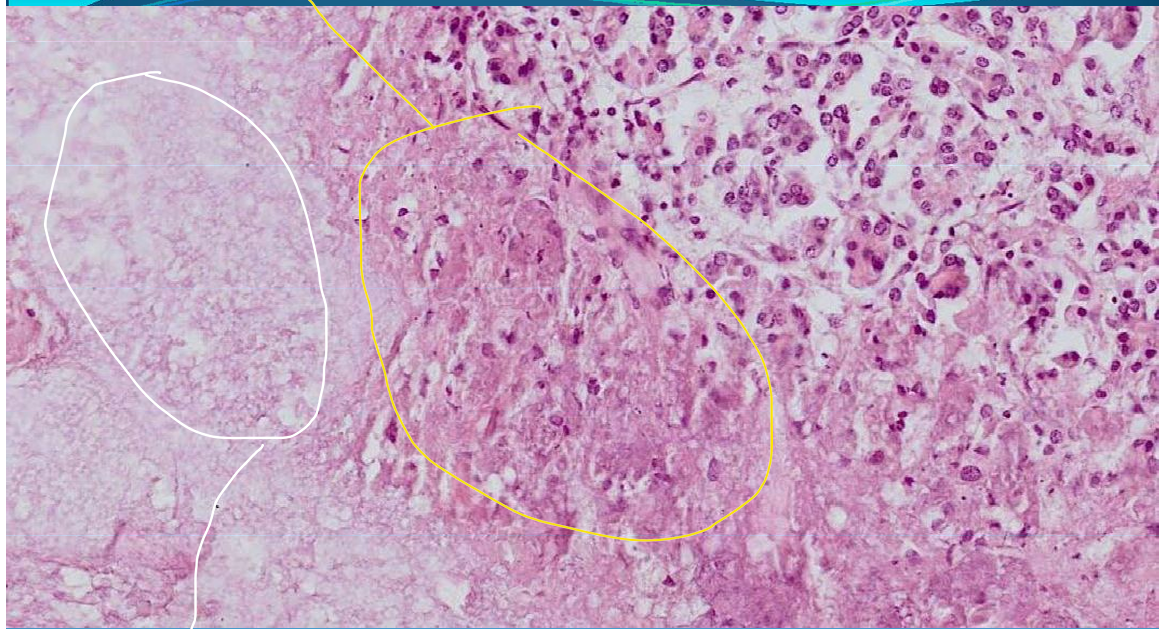
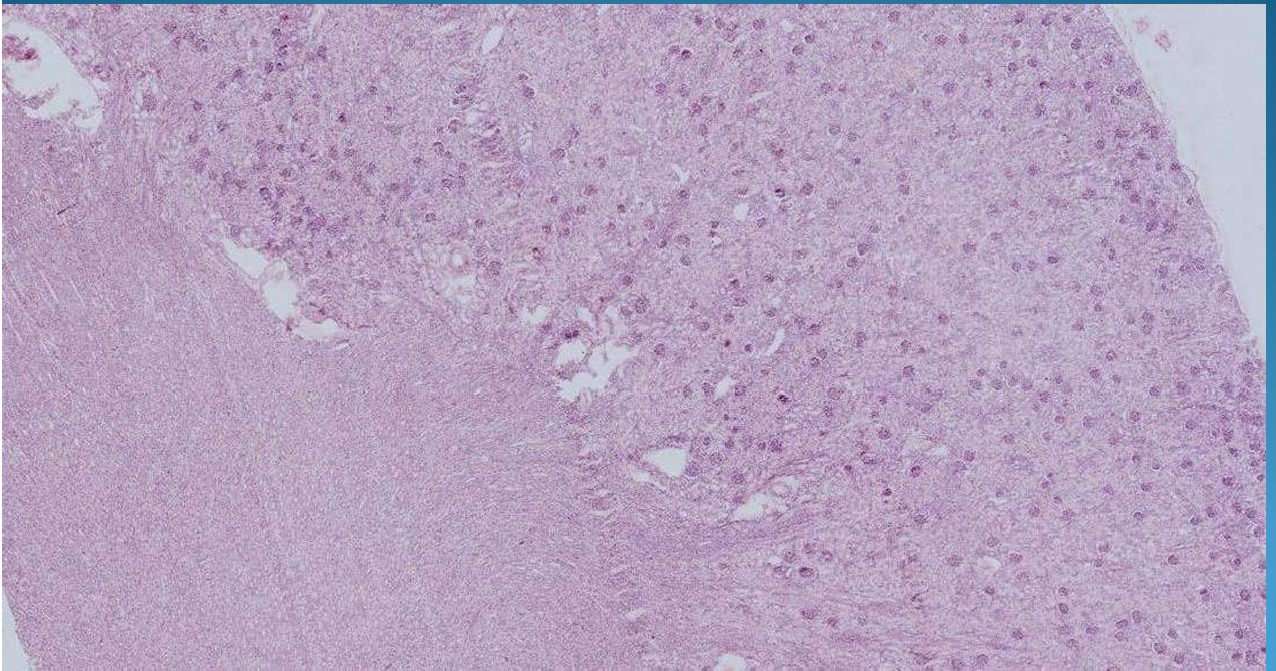
What is this?
KIDNEY:
Acute diffused glomerulonephritis: Streptococcus infection, hypercellularity of glomeruli
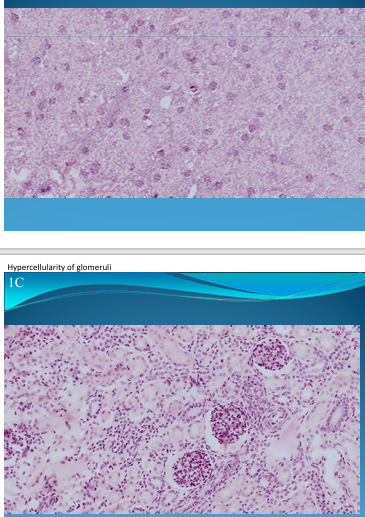
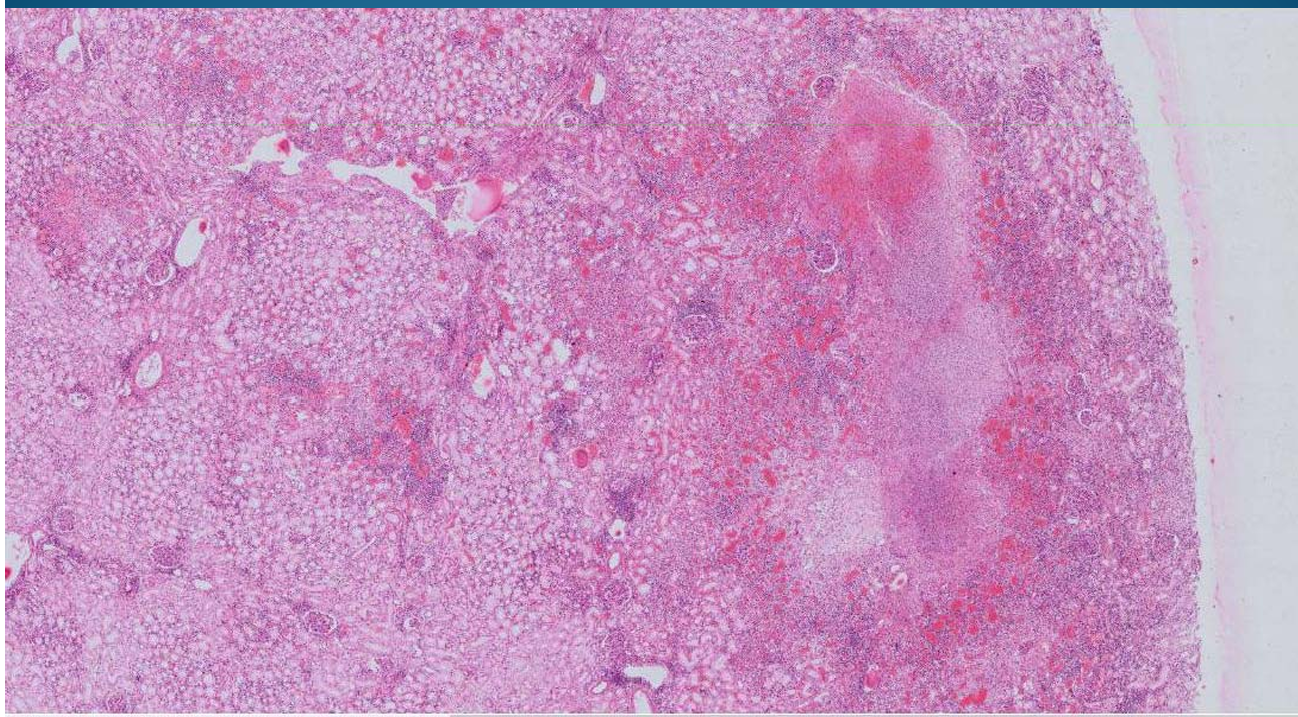
What is this?
KIDNEY:
Pyelonephritis = Microabscess, similar to abscess in liver
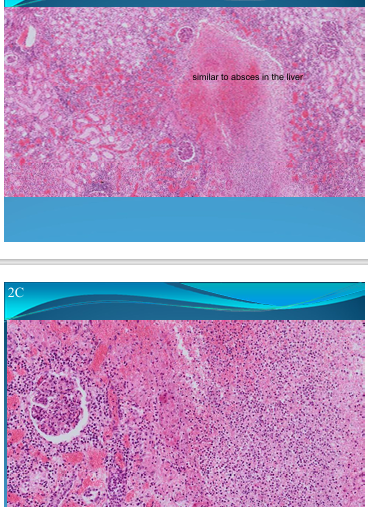

What is this?
KIDNEY:
Chronic Pyelonephritis: Tubules are dilated → contain hyaline cylinders; glomeruli hyalinized due to scelrosis - centripetal type of sclerosis from periphery to center of glomeruli. Pseudothyroidization of aspect of renal parenchyma
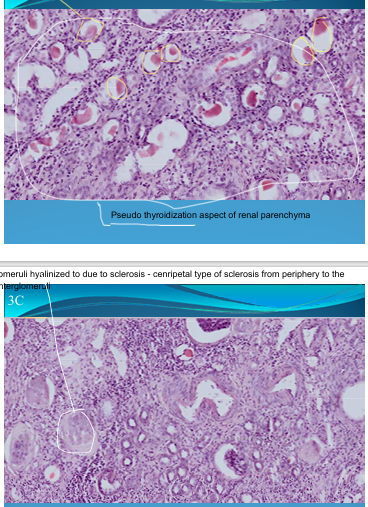
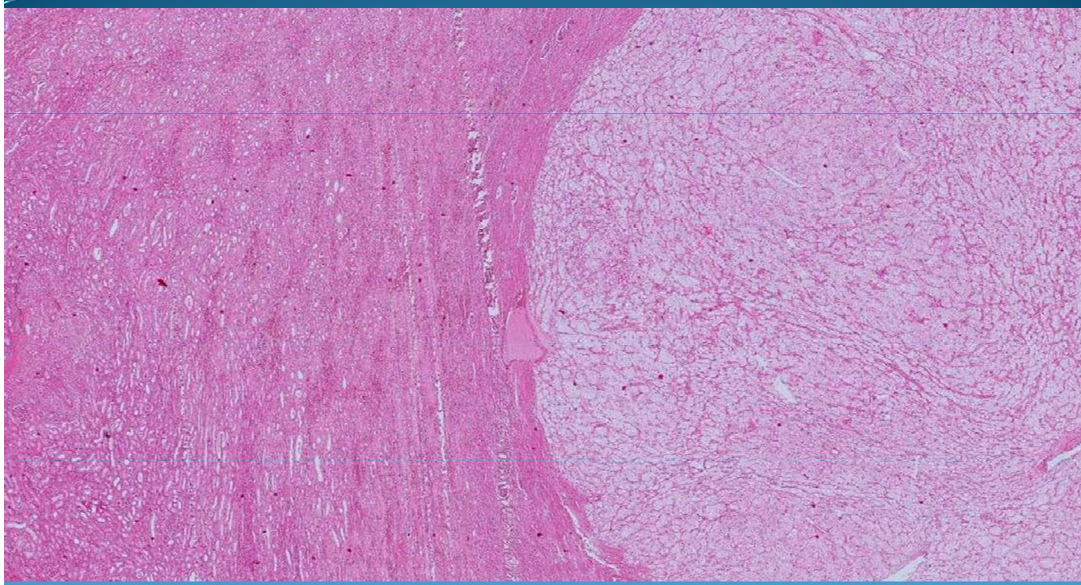
What is this?
KIDNEY:
Grawitz tumor (renal cell carcinoma):
at periphery - atrophy of parenchyma due to compression of growing tumor
Grawitz tumor = Clear cell carcinoma = Hypernephroma
we can see aspect of clear cells because cells contain lipids and glycogen

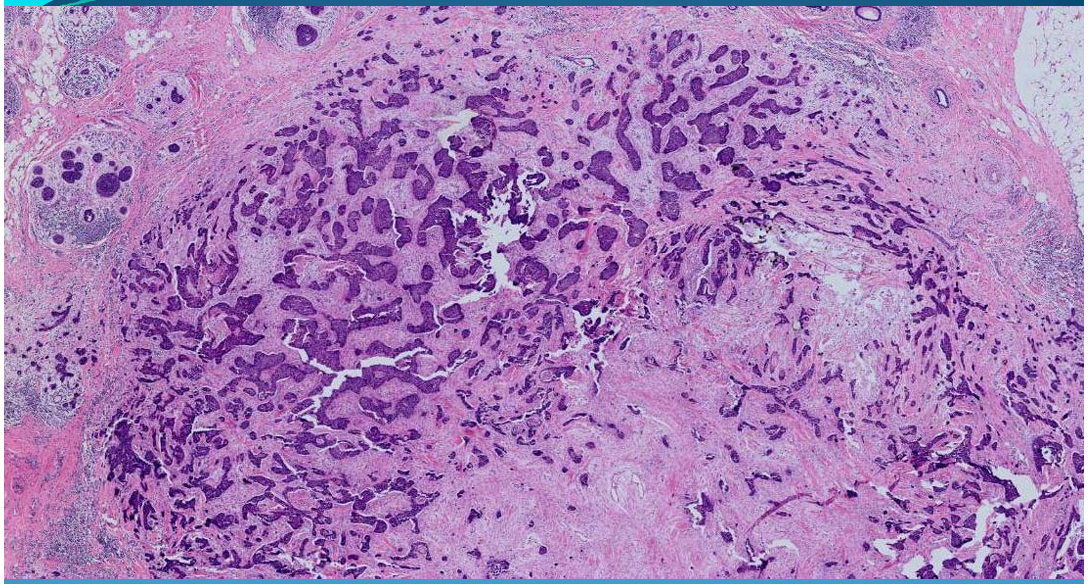
What is this?
BREAST(Mammary glands):
Mammary carcinoma: has invasive ductal carcinoma with fibrous stroma and trabecular and insular aspect
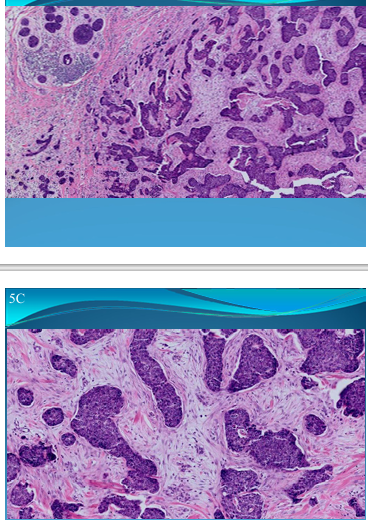
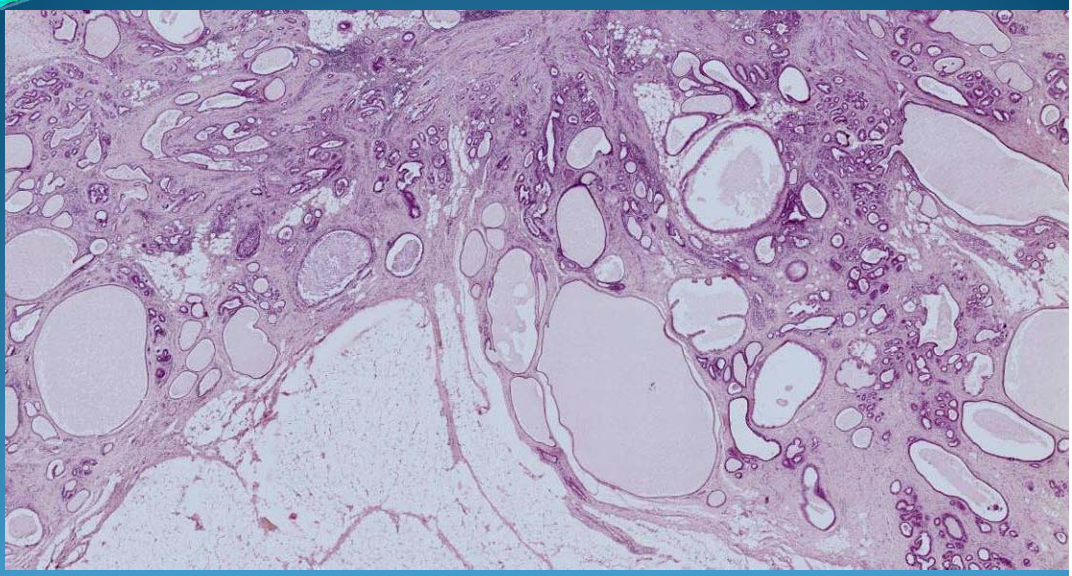
What is this?
BREAST (Mammary gland):
Fibrocystic mastosis
Dilated ducts
Glandular and mesenchymal hyperplasia
Apocrine metaplasia = ducts lined by follicular epithelium
Inflammatory cells
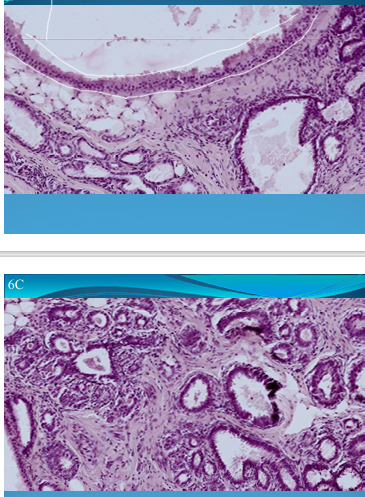
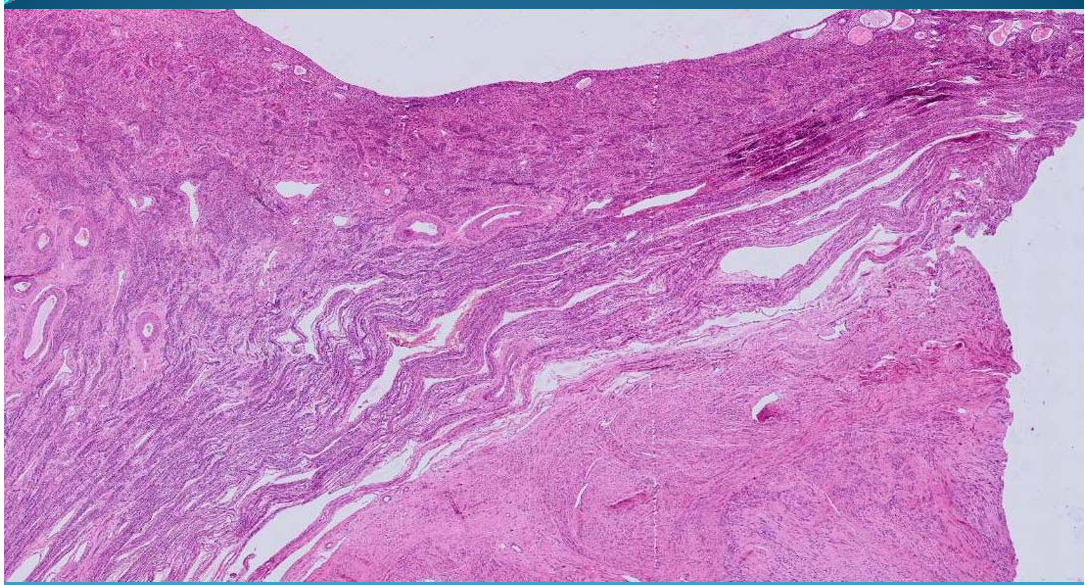
What is this?
UTERUS:
Leiomyoma of endometrium = acute mesenchymal tumor, rising up from smooth muscle.
Pseudocapsule of tumoral growth due to compression
Styrofoam aspect of smooth muscle with nuclei which are elongated with rounded ends
Hyaline tissue
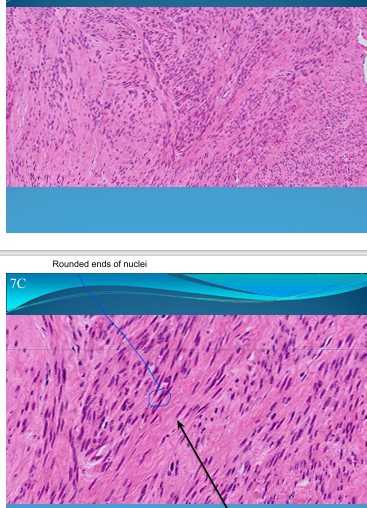
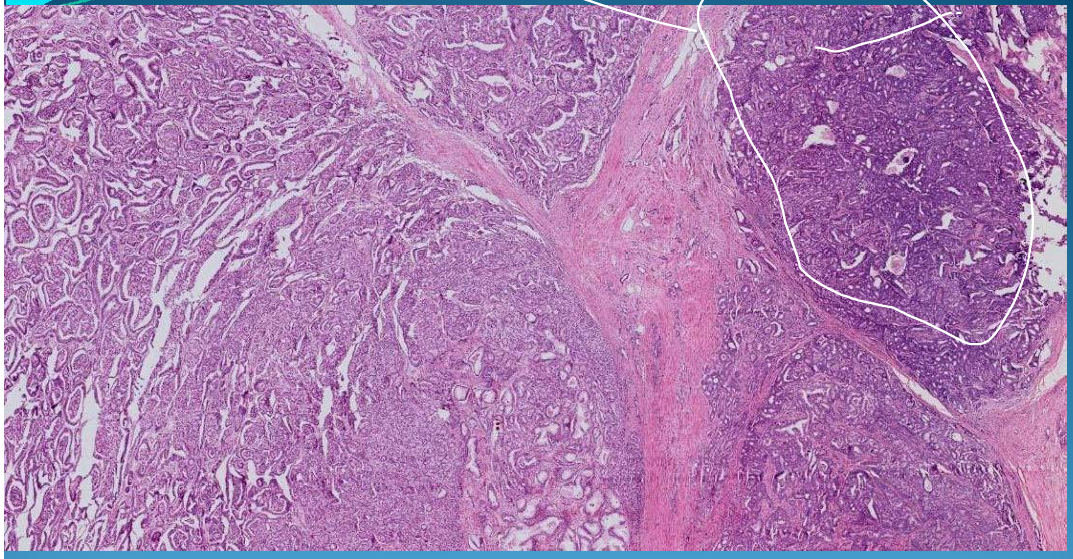
What is this?
PROSTATE:
Prostatic adenocarcinoma: Grade 3/4, epithelial malignant tumor
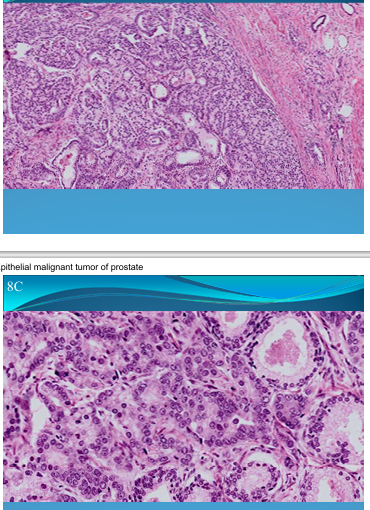
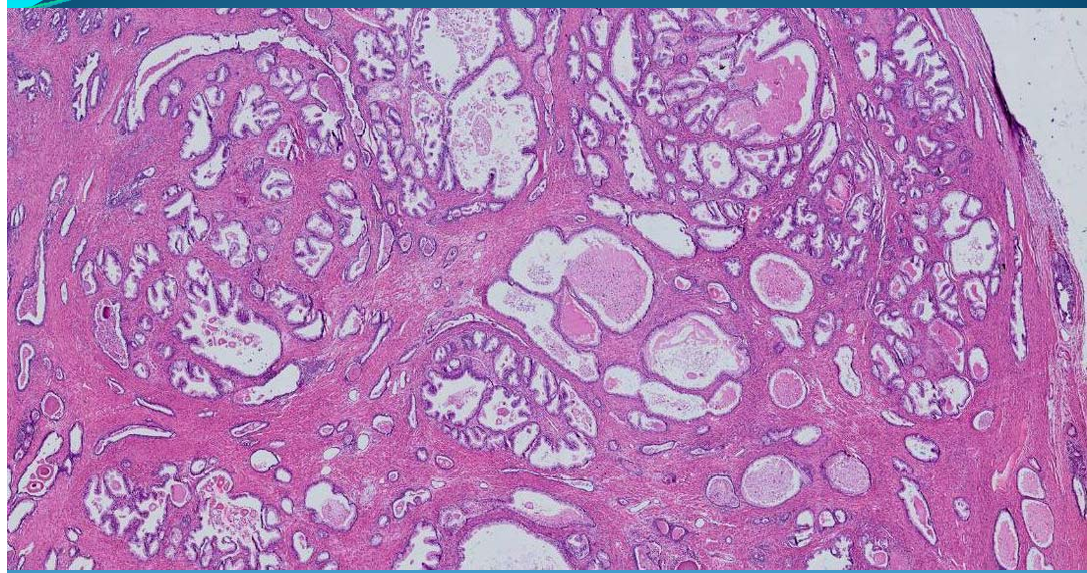
What is this?
PROSTATE:
Benign Nodular Hyperplasia: fibrosis, muscular hyperplasia - dilated ducts with fern leaf aspect and some with sympexions
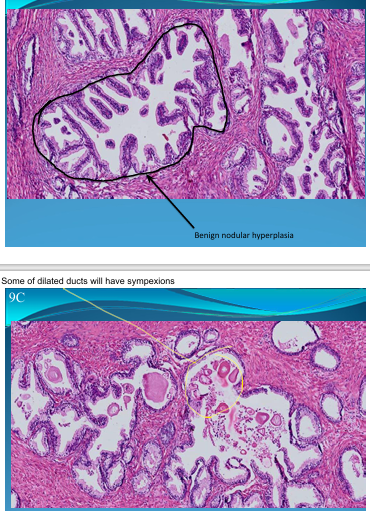
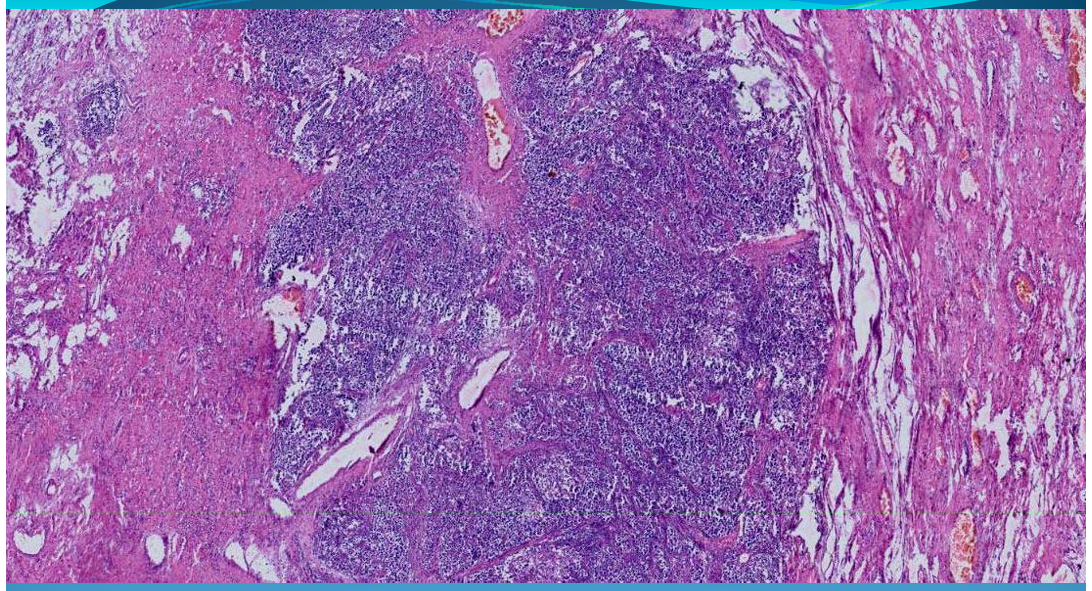
What is this?
TESTIS:
Seminoma = Malignant tumor of testicle rising from germ cells, clear cytoplasm + monomorphic, island of tubular cells separated by fibrostroma infiltrated with lymphocytes.

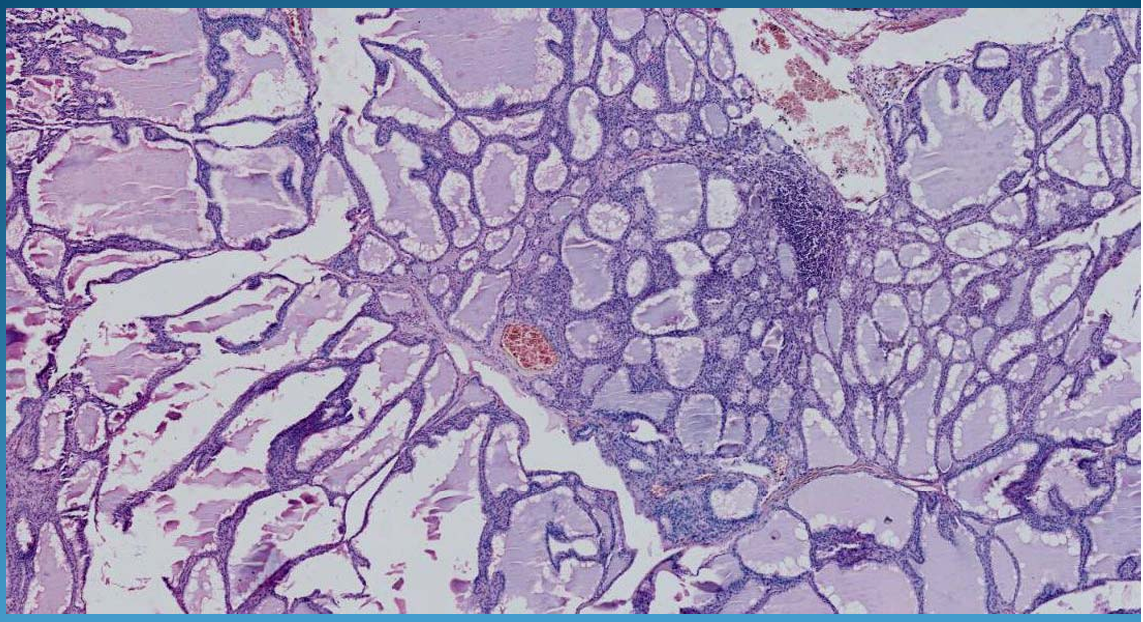
What is this?
THYROID:
Basedow-Graves: TOXIC goiters
follicles lined by columnar epithelium contain small amounts of colloid
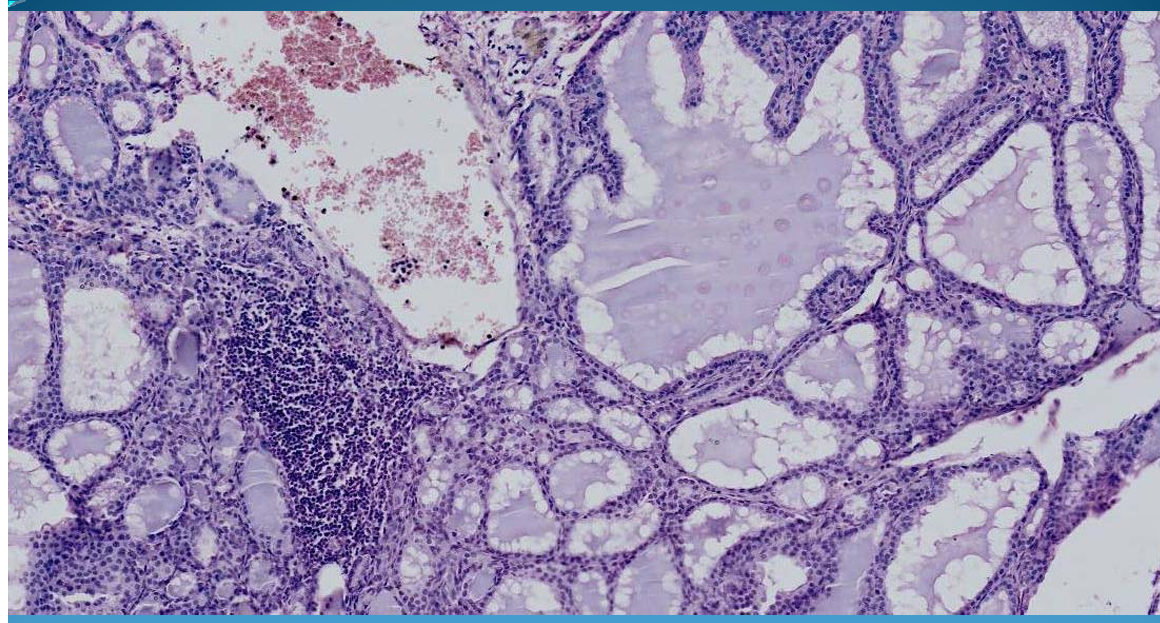
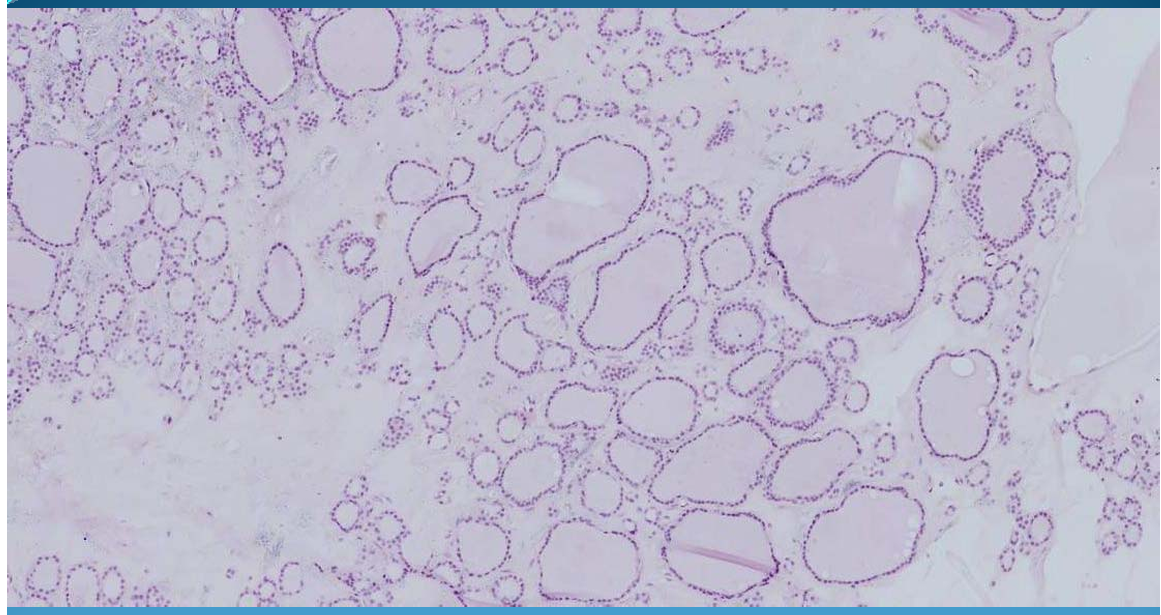
What is this?
THYROID:
Non-toxic goiter, diffused = anisophilicular type of gout; thyroid follicle dilated and full of colloid, lined up by cubic epithelium
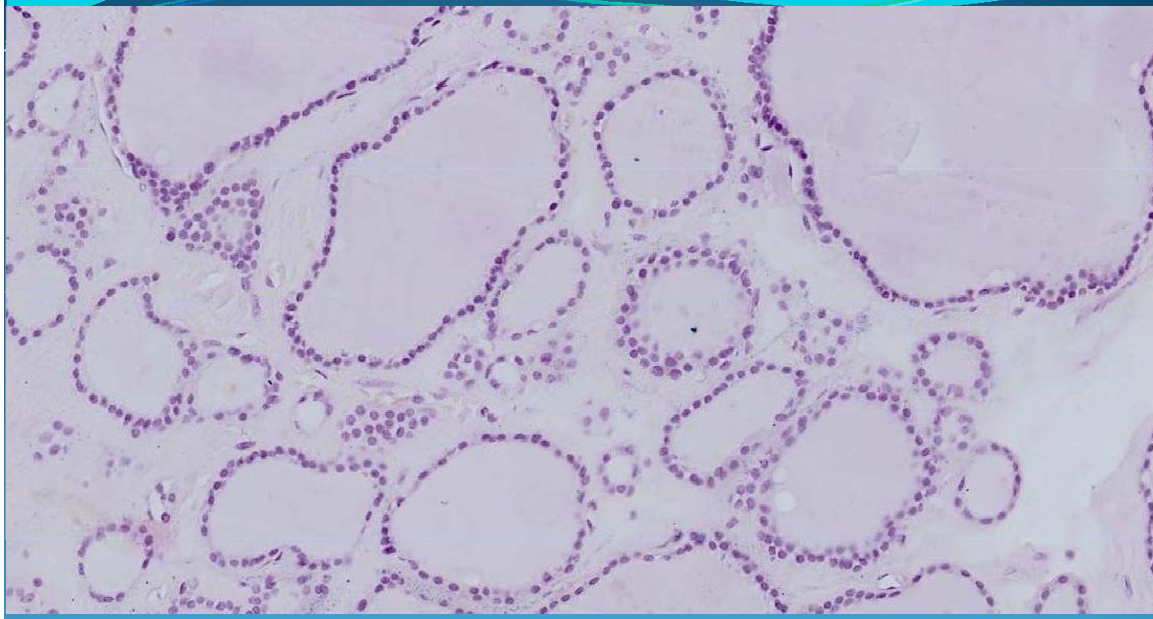
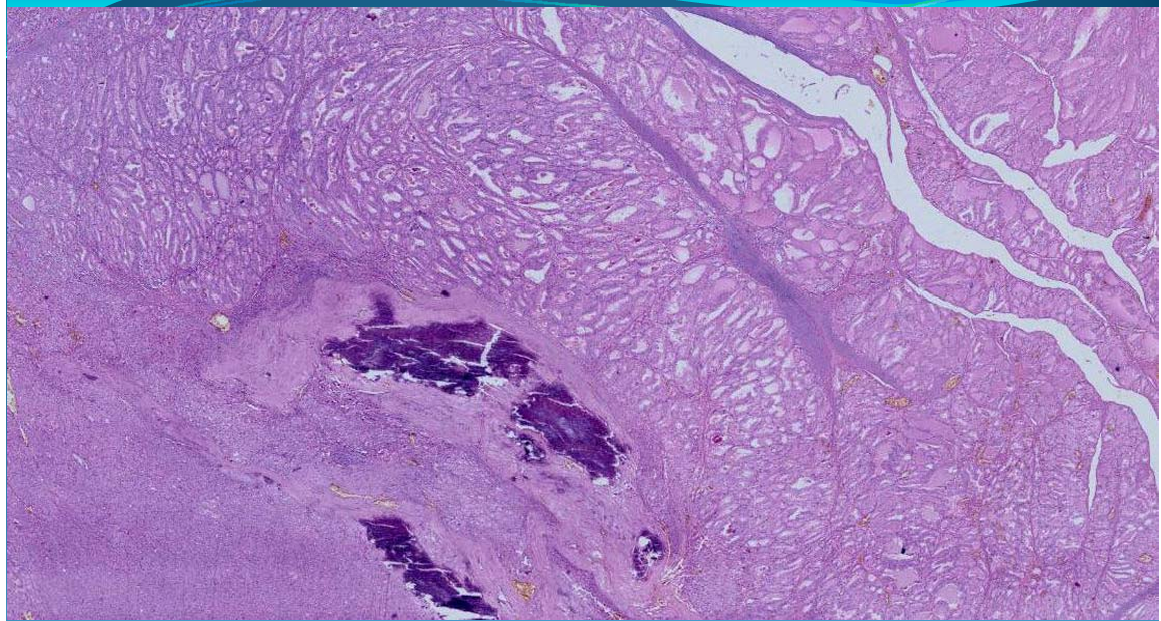
What is this?
THYROID:
Thyroid papillary carcinoma: epithelial malignant tumor; macrocalcification of thyroid = psammoma bodies, lethal Annie’s orphan eye nuclei - large and clear nuclei and intranuclear inclusions
